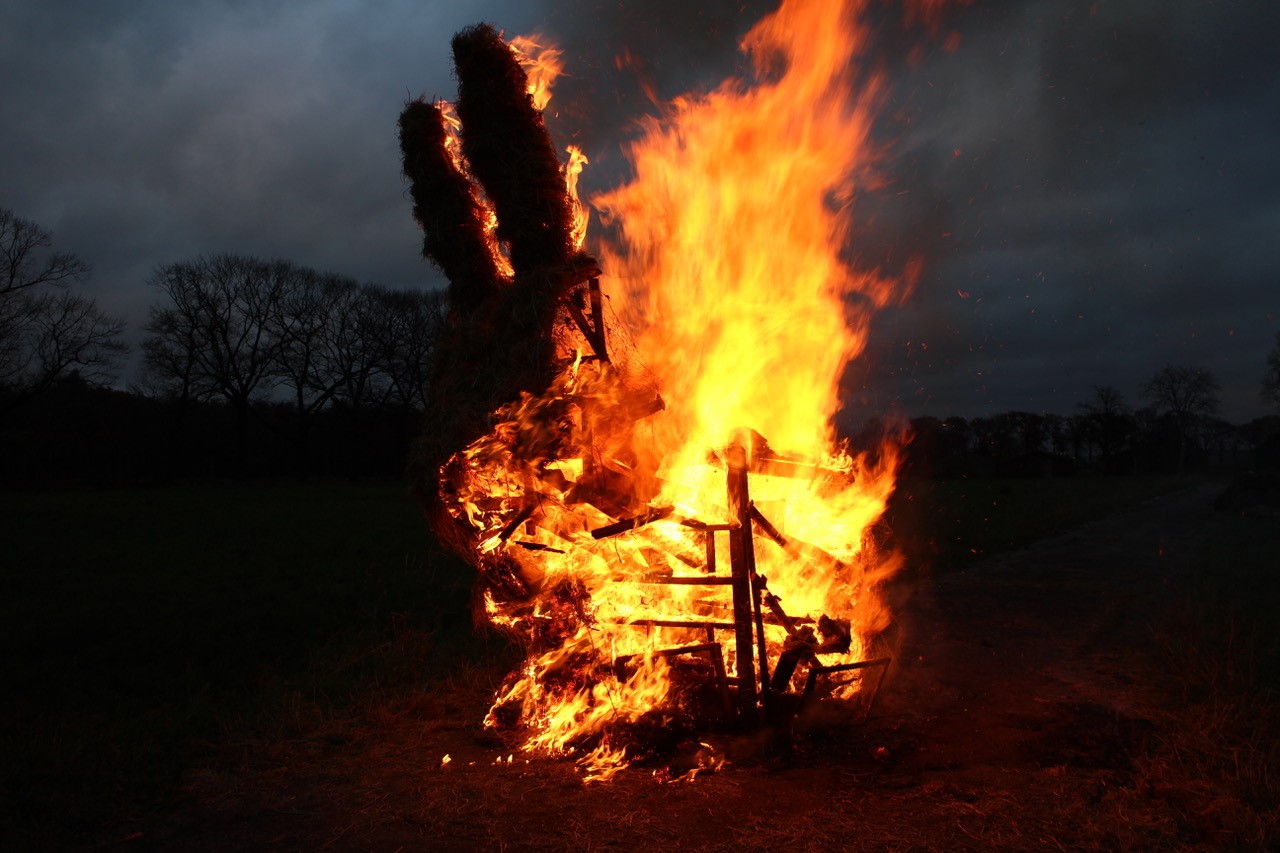
Coming soon
Coming soon
Select type

Undoubtedly, the most striking booth at Art Rotterdam will be that of the Annet Gelink Gallery. No one will be able to casually pass by a 3½-meter-high rabbit made of hay. For his new project, tentatively entitled De Gloeiige, Erik van Lieshout temporarily traded his residence and workspace in Rotterdam for his hometown of Deurne, an agricultural village on the Brabant side of the Peel that has become a focal point in the resistance against nitrogen policies in recent years. Van Lieshout spent a year there capturing footage for a new film, creating sculptures of eggs and the hay rabbit. Handmade T-shirts, crafted by Van Lieshout in collaboration with Rotterdam fashion designer Jeroen van Tuyl, are also available for purchase.
“Have you ever stood in a barn with a thousand pigs?” Erik van Lieshout asks somewhere in the middle of our conversation. There is a brief silence. “See, that’s the point; the city and the countryside are two worlds that don’t often interact.” That is precisely what Van Lieshout aims to do with his project: bring these two worlds into contact with each other, even if it means causing a bit of friction.

De Gloeiige
Erik van Lieshout’s latest project takes its working title from the regional myth of a ghostly apparition observed at night in marshes and marshy heathlands. In one version of the legend, the ghost is a farmer who had tampered with boundary markers. After their death, the spirits roam around, trying to reconcile before finding peace.
While De Gloeiige (which translates as ‘the glowing one’) closely follows political events, Van Lieshout has previously created works about farmer protests. The unruly demonstration in front of the Friesland provincial government building in 2019 was the subject of a large collage made from coloured vinyl, just like the tractor protests in The Hague the following year. Protests and challenging the status quo are recurring themes in Van Lieshout’s work. This traces back in part to his upbringing in Deurne, where village politics have been traditionally dominated by the interests of pig and chicken farmers. Van Lieshout’s parents were not farmers, making him an outsider and giving him a love-hate relationship with the local farmers.
Very positive
“It’s a really hardcore industry and the farmers know that something has to change,” Van Lieshout summarises the situation, “because we’re up to our ears in manure here.” With the film he is currently editing, he hopes to bring about sustainable change in the region. Apart from farming, there is little to do in the Peel, according to Van Lieshout. “There are no bike paths, beautiful walking routes or coffee bars, and aside from the Wieger, no museums. I want to change and transform the area into something enjoyable.” For this reason, Van Lieshout refers to his project as “very positive for farmers”. But this is not as straightforward as it may sound because the farmers were not initially open to an exchange with an artist. “Farmers tend to keep to themselves and nowadays, they are especially wary of the media and animal rights activists,” says Van Lieshout. For De Gloeiige, it helped that he came from Deurne and spoke the language. Van Lieshout was transparent about his intentions – “they know I’m a left-wing activist” – and thus gained their trust. He gradually earned their trust and permission to film everywhere. What also helped is that, according to Van Lieshout, the region has a lot of humour. Despite the serious message, humour is not lacking in Van Lieshout’s work or in the film. At the festive conclusion of the project the day after the parliamentary elections – one of the hay rabbits was to be burned while everyone enjoyed a bowl of pea soup and beer – everyone who contributed to the project from the neighbourhood showed up, much to Van Lieshout’s surprise.
While occasional friction is only natural, it enhances the film. Van Lieshout welcomes collectors and museum delegations, bringing them into contact with the farmers. An uncomfortable gathering, not least because some urbanites are vegetarians. This underscores Van Lieshout’s point that urbanites and farmers rarely encounter or know each other.
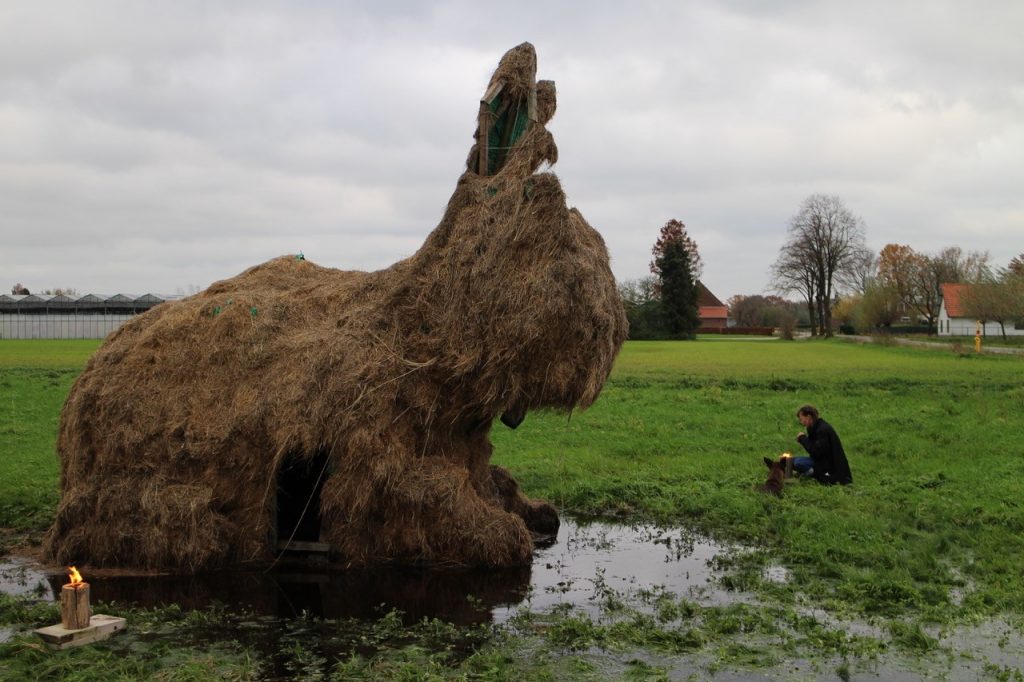
A towering rabbit
Van Lieshout not only addresses the separate worlds of the city and countryside, but also poses the questions of who owns the land and what can be done with it. He gained access to the ruins of a farmhouse, owned by a veterinarian who, like Van Lieshout, left the region to study. The veterinarian now wants to return to start a laboratory developing a serum for snakebites. This would involve testing on laboratory rabbits. The plan faces strong opposition, not only from activists, but also local farmers. In response, Van Lieshout decided to build a towering rabbit made of salvaged wood covered in hay on the veterinarian’s land, a provocative imitation of the hay structures that farmers set up along the road in protest against nitrogen policies.
Another location that plays a prominent role in the film is the area behind the ruins: a vacant 250-hectare terrain. Originally intended for greenhouse development, the financial crisis of 2008-2013 prevented any progress. The development of this area is a hot topic in the municipality. Some residents want nothing to be done with it, while local farmers would prefer a manure fermentation factory, allowing everything to remain the same.
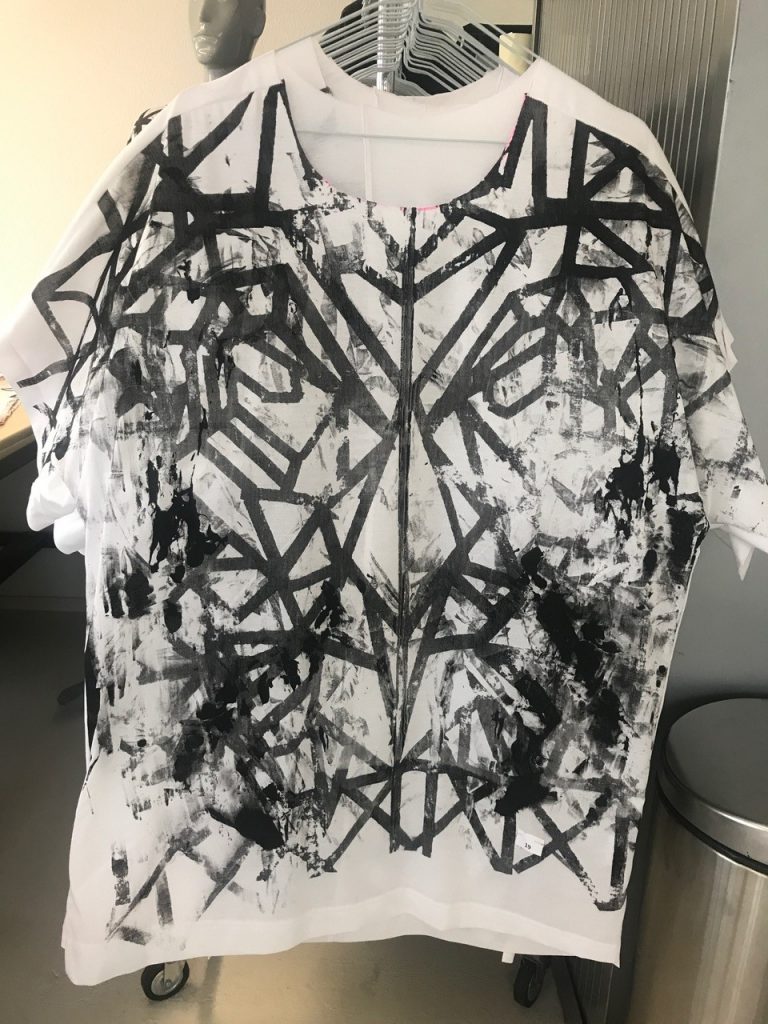
Farmers’ art and T-shirts
The veterinarian allowed Van Lieshout to use everything he found in the ruins for his work. Planks, belts, pitchforks and spades were all incorporated into sculptures. But the main component is the white eggshells. Van Lieshout purchased the eggs from a local farmer. Using a needle, Van Lieshout pierced a hole and blew out the contents. He used the empty eggs in a series of sculptures that might be called farmers’ art. The imagery refers to farm life and Catholicism – the comparison to a rosary is easily made with a chain of eggshells – two pillars that shaped and continue to shape life in the region. Some of these sculptures will be exhibited at Art Rotterdam at the Annet Gelink Gallery booth.
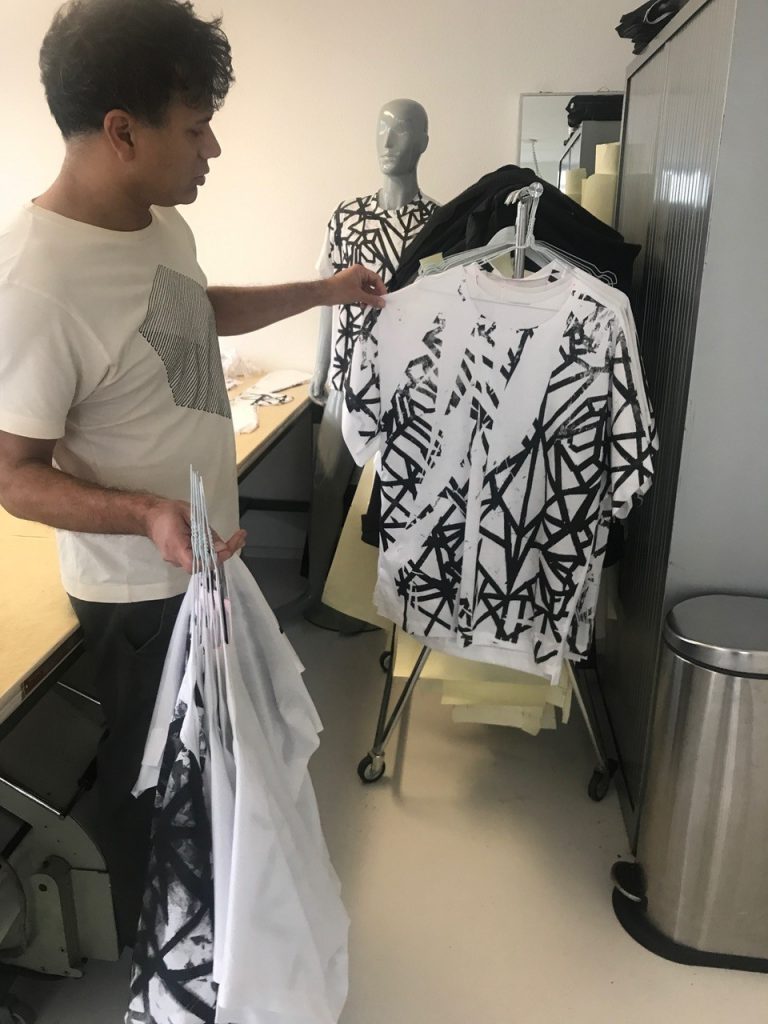
A self-made T-shirt is also available for purchase in a limited edition of 50, resulting from Van Lieshout’s collaboration with Rotterdam fashion designer Jeroen van Tuyl. Van Lieshout used Van Tuyl’s logo, a kind of mask, as inspiration for a sketch, which ended up as a Mondrian-like drawing with sleek vinyl lines. Van Lieshout and Van Tuyl screen-printed an enlarged version of it on white cotton. Each shirt has its own – often double – print in typical raw Van Lieshout style. Van Tuyl created the design. “Putting it together is meticulous work; the entire family has been involved and we’re still working on it,” says Van Lieshout, who hopes to have the 50 shirts ready for Art Rotterdam.
Written by Wouter van den Eijkel
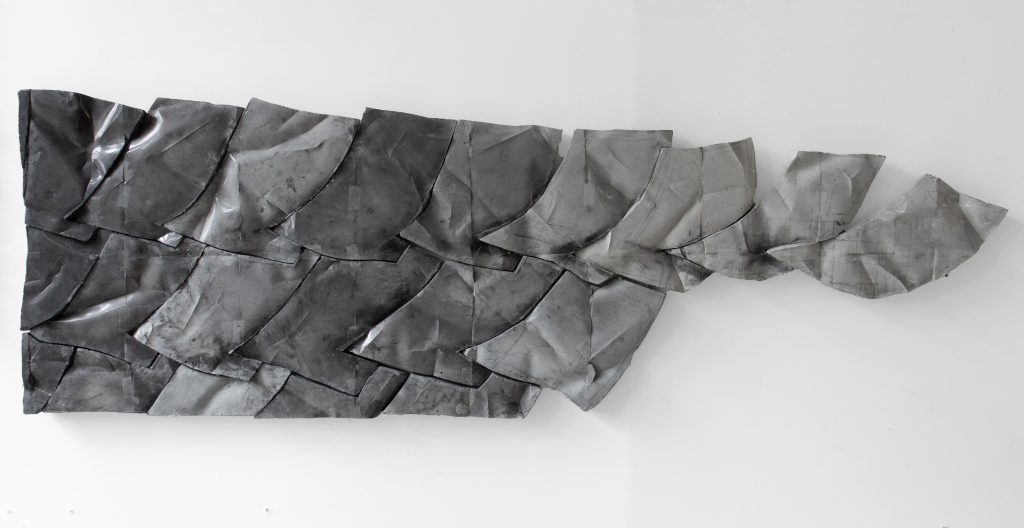
For the eighth year in a row, the NN Art Award will be awarded to a promising artist who completed their studies at an art academy in the Netherlands and is exhibiting at Art Rotterdam. This year, for the first time, the nominees will exhibit their work in the leading Kunsthal Rotterdam, from 1 February to 14 April 2024. The nominated artists for the NN Art Award 2024 are Maaike Kramer (Art Gallery O-68), Mónica Mays (Prospects section of the Mondriaan Fund), Jan van der Pol (CREMAN & DE ROOIJ) and Peim van der Sloot (Brinkman & Bergsma).
Maaike Kramer’s oeuvre stands out because of her diverse use of materials, including concrete, metal, graphite, paper, stone and wood. In her practice, Kramer combines robust, architectural elements with more sketch-like materials. This results in works that are often heavy, massive, and monumental, but also light, fragile and unstable. Sometimes these works also exhibit trompe-l’oeil effects. Kramer explores the dynamic interaction between these diverse and, at first glance, contradictory materials: can they learn from or borrow from each other? And what relationships do the works enter into with the spaces in which they are shown?
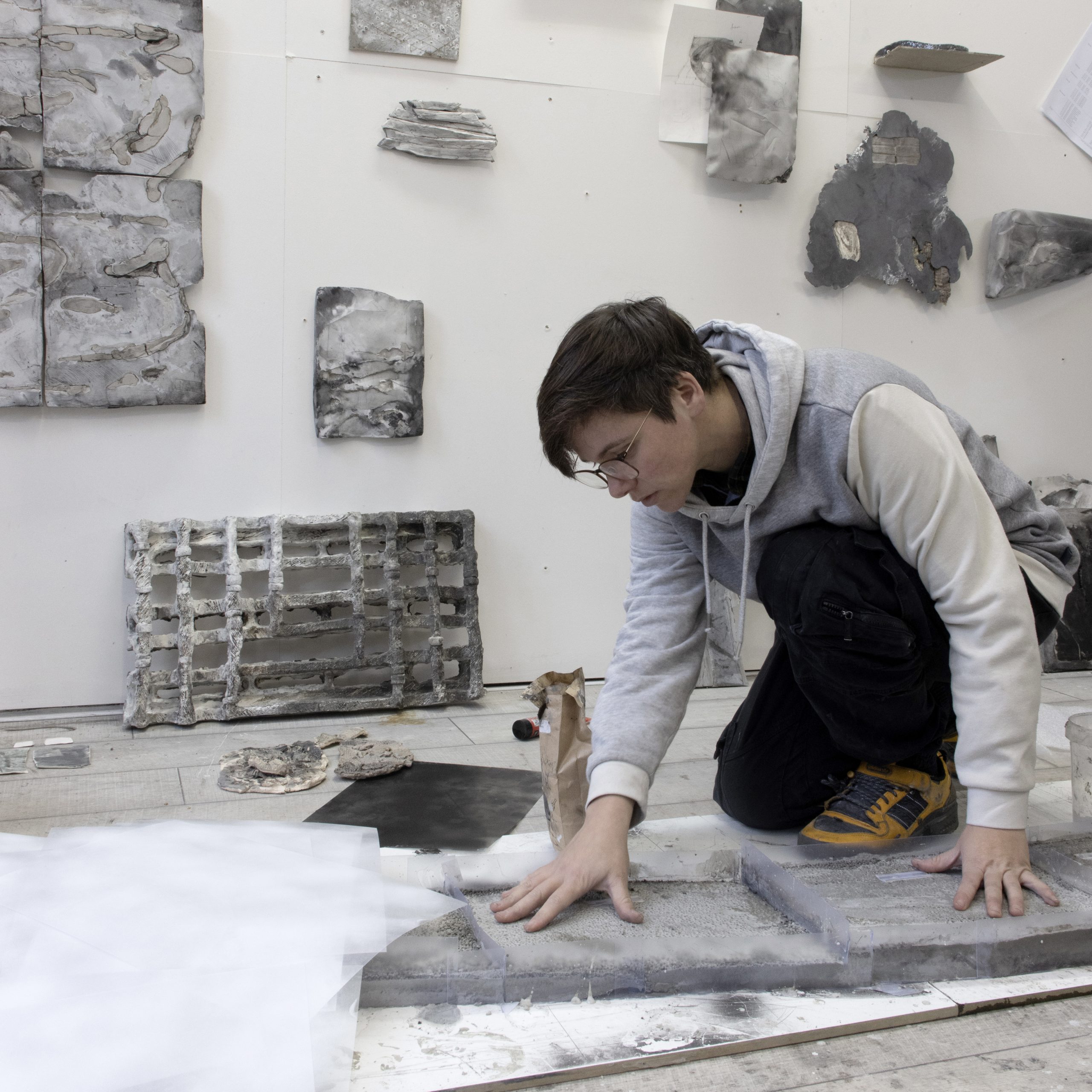
Kramer’s art tells stories about the creative process and reflects on the spaces we create and inhabit. They invite contemplation on the nature of construction, the role of humans in shaping their environment, and the contrast between the transience of ideas and the durability of materials. Kramer emphasizes this: “Ideas are not as durable as the material in which they are captured.” In some cases, this line of thinking is reflected in her practice, for example when sketches are literally integrated into the work. Kramer: “I incorporate different stages of the creating process into my work; from the monumentality of the final work, to the materials and methods that lead up to it. Examples include sketches, documentary photography, and scale models in combination with concrete, steel, and scaling up. During the creating process, the work goes through various phase transitions, dictated by the materials and the methods. Sketches are given a sculptural translation, are photographed, printed, enlarged, cast and copied.”
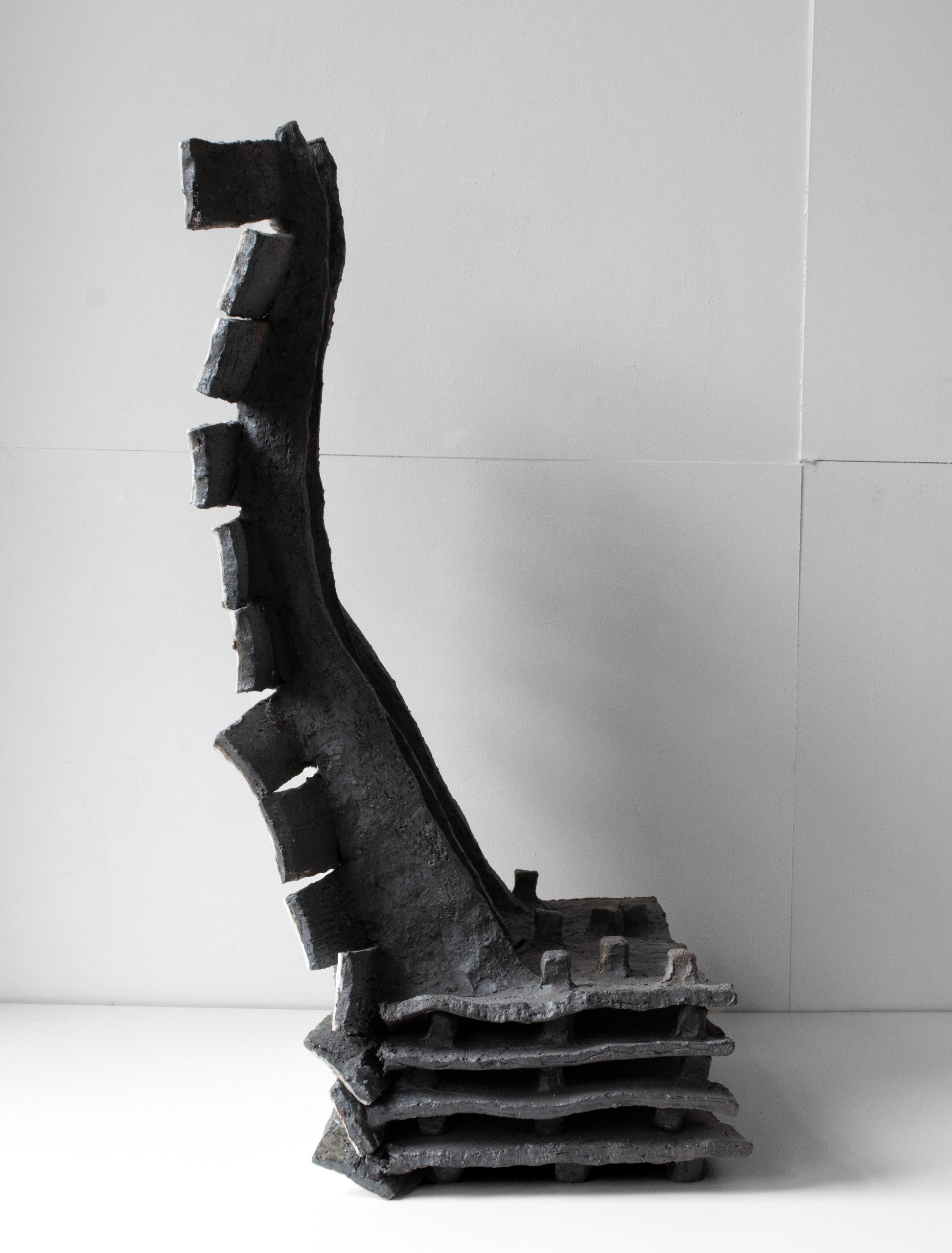
Could you tell us a bit more about the work you are presenting at Art Rotterdam and in the Kunsthal? What led you to focus on ceramics in your newer works?
My work is about spaces, about architectural spaces as a metaphor for spaces in one’s mind. I also wanted to explore the space we inhabit more and felt that this required a new material. For this reason, I applied to the EKWC [European Ceramic Work Centre], where I completed a three-month residency program last year. There, I worked with ceramics for the first time and built spaces by hand, seeking ways in which form and material could give new meaning to space. For me, material is an active part of my story. It undergoes a transformation that allows a story to be told. At the EKWC, I ended up working with different types of clay with different levels of shrinkage, causing deformations and cracks during the process of drying and in the kiln. These works reflect on the space indoors. Some works are about the separation between the indoor and the outdoor. These are works I call ‘luxaflex’. I will show some of these luxaflex sculptures at Art Rotterdam. Here, porcelain is connected to coarse black clay. This creates a side that faces outward, made of porcelain with a celadon glaze, and a side that faces inward. These parts influence each other. The coarse inner part causes the smooth porcelain outer part to deform. In the Kunsthal, I will present a large sculpture, made at the EKWC. This sculpture also represents a space, actually a ‘slice’ of a space. It’s a place in which room has been created for a game of sorts. I searched for a space in my own house that felt the most free and experimental, and ended up choosing my shed. In this fictional shed, game boards are stacked where strategies can be thought out, to possibly place them outdoors, in the world. However, the space is also very isolated. So will these ideas actually come out, and if so: how?
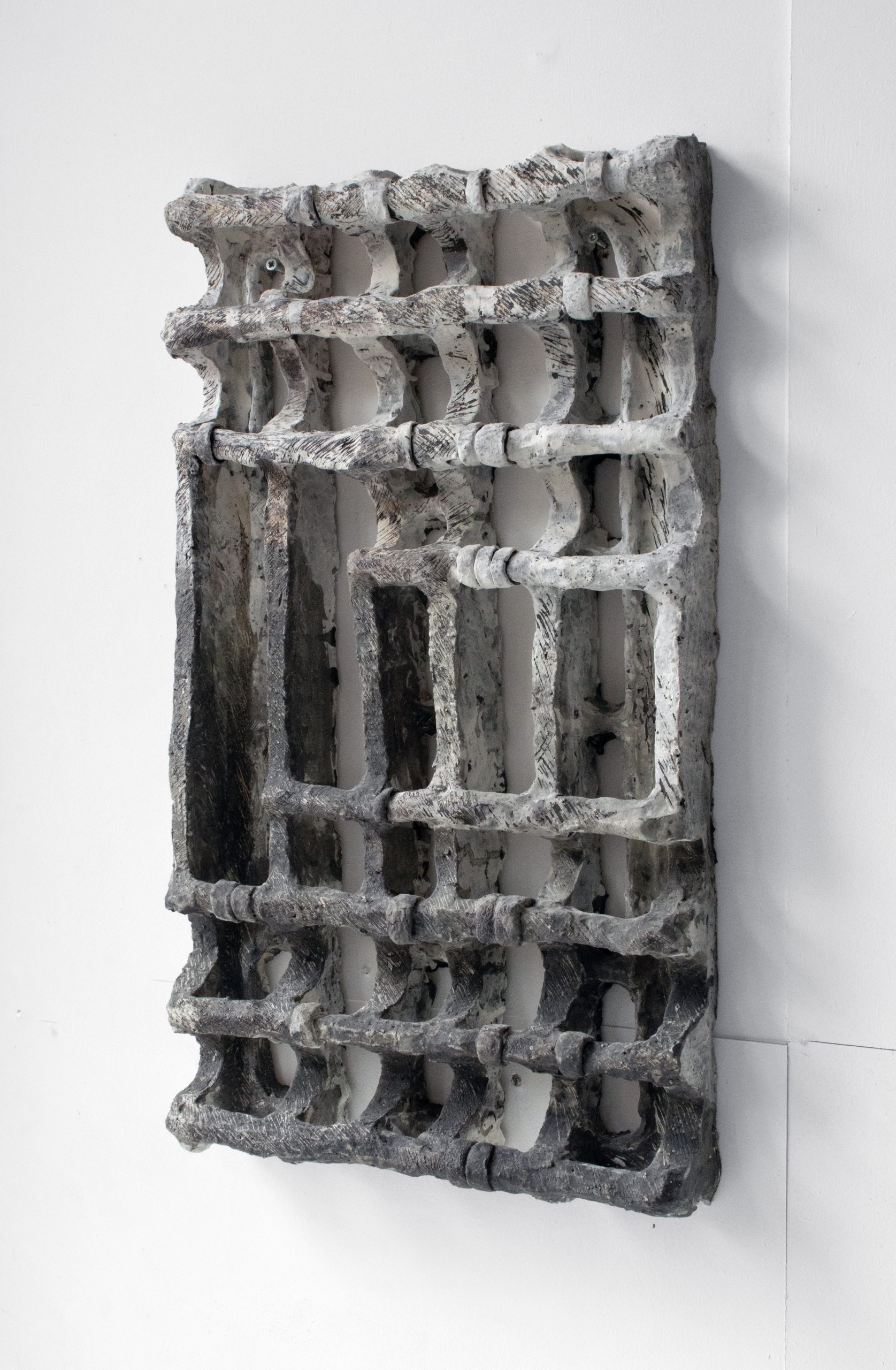
What are your plans for 2024? What are you currently working on?
I’m not done exploring ceramics and the various meanings that clay carries. I am also working on making combination works, in which different materials come together. The step to work spatially is still relatively new to me. Until recently I made primarily flat reliefs, folded sheets or flat stacked works. For my exhibition ‘The Unbalancing Act’ at Drawing Centre Diepenheim in 2022, I started making sculptures with a front, side, and back side for the first time.
Could you describe how you felt when you heard that you were nominated for the NN Art Award? What project would you immediately tackle if you were to win the award?
I was incredibly happy and surprised. This is actually the first time my work is being shown at Art Rotterdam — as well as the Kunsthal. If I were to actually win the award, I would invest in my studio. At this moment, my studio is not quite on par with my practice, which is progressively shifting towards sculpture. This requires more space, but also materials and tools. I would really love to have a ceramic kiln, for example.
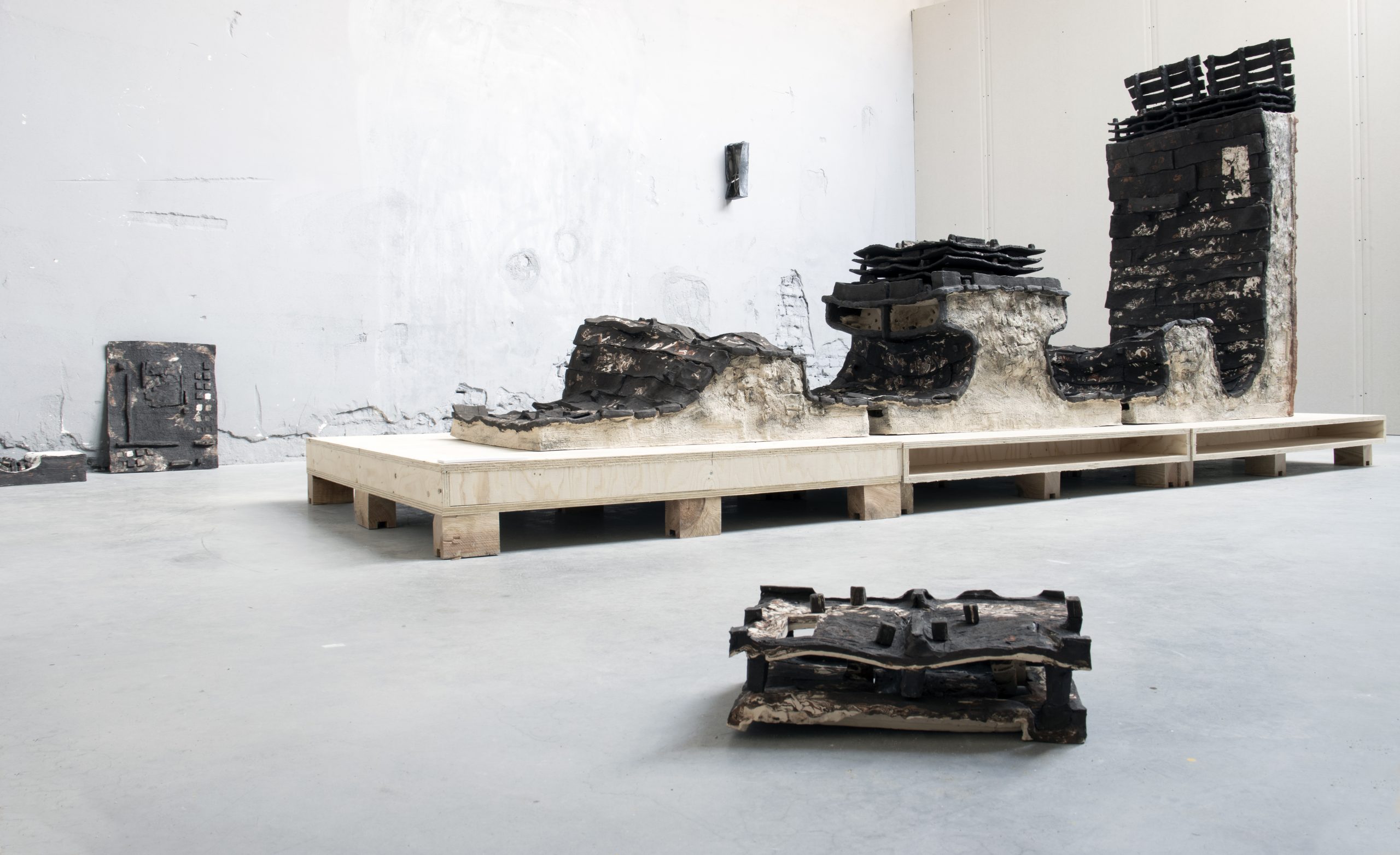
What is the best advice you have ever received?
Maybe not advice per se, but rather something I have experienced myself. That making visual work is not about tomorrow’s success or that one particular exhibition. But that you must feel that you need to make the work, for whatever reason. For many years I made work that no one saw. My work was first exhibited around 2017, when I had already been working for a few years. But that in fact gives me strength now, knowing that my inner creative engine will keep running.
What is the most remarkable compliment you have ever received about your work?
That it touches people without them being able to put their finger on why exactly. My work is not always immediately graspable or understandable in a single glance, but there is a kind of gut feeling to it, I hope. It feels like a great compliment when that happens.
The winner of the NN Art Award will be announced in the Kunsthal Rotterdam on Thursday 1 February at 20:00 CET. The work of the nominees will be on display there until 14 April 2024. At Art Rotterdam, Maaike Kramer’s work will also be on display in the booth of Art Gallery O-68.
Written by Flor Linckens
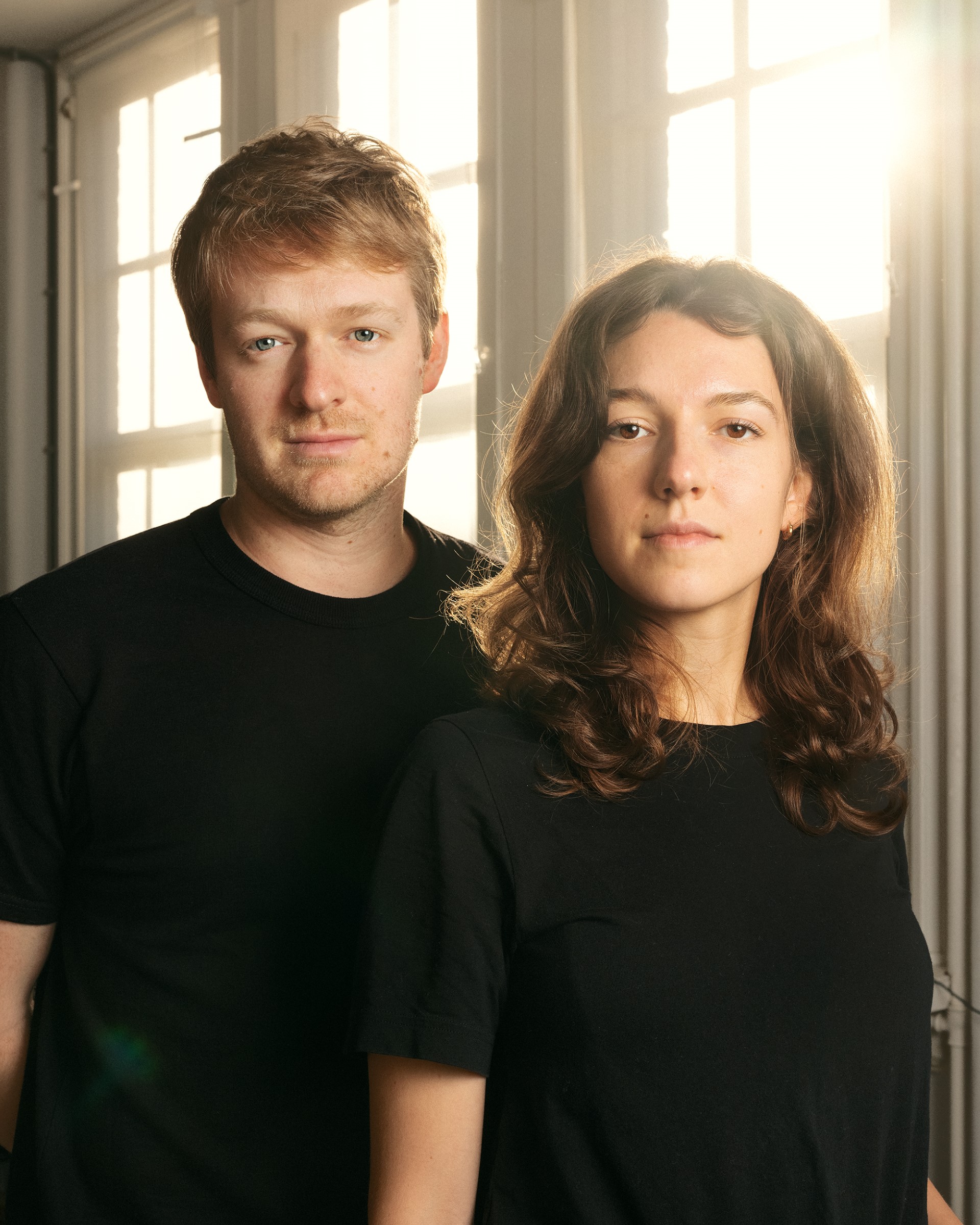
In their long-term project “Fault Line”, Ana Zibelnik and Jakob Ganslmeier focus on the social consequences of the climate crisis. Launched in 2023, the project explores the profound impact of climate change on individual lives in Europe, ranging from climate anxiety and activism to populist denial of the issue. By capturing portraits of individuals, the photographers give a human face to a problem that often feels quite abstract. In the first part of the project, the artists specifically address the psychological phenomenon of climate anxiety, which is particularly prevalent among young people as they are confronted with an uncertain future. “Fault Line” is currently on display at the Fotomuseum Den Haag (until 31 March 2024).
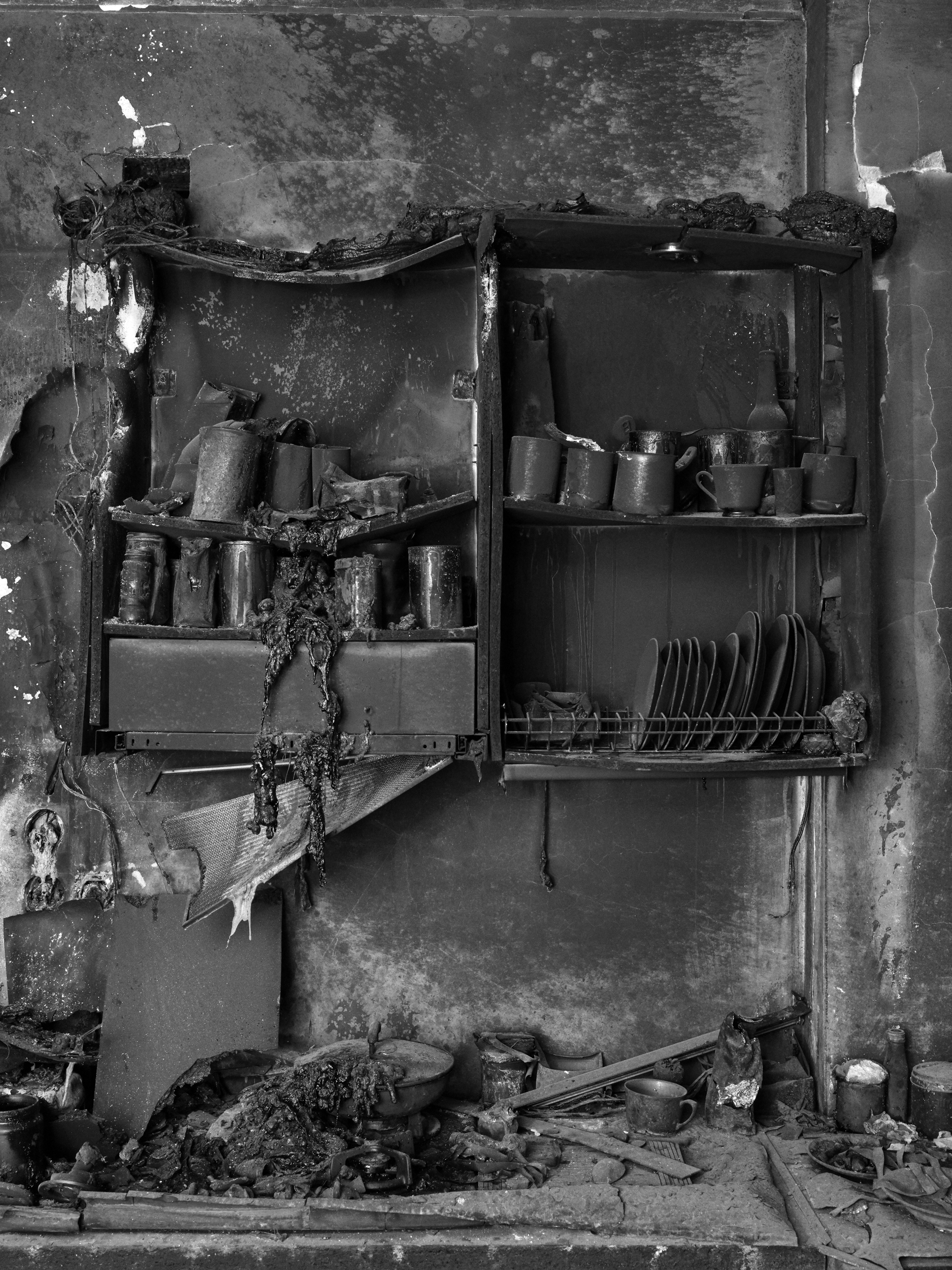
Ana Zibelnik and Jakob Ganslmeier will also present the project at Prospects: an initiative of the Mondriaan Fund that showcases work by 86 artists who received financial support in 2022 to launch their careers. The work on display ranges from photography to textile works, video to paintings and performances to sculptures. The exhibition is curated by Johan Gustavsson in collaboration with curator Louise Bjeldbak Henriksen.
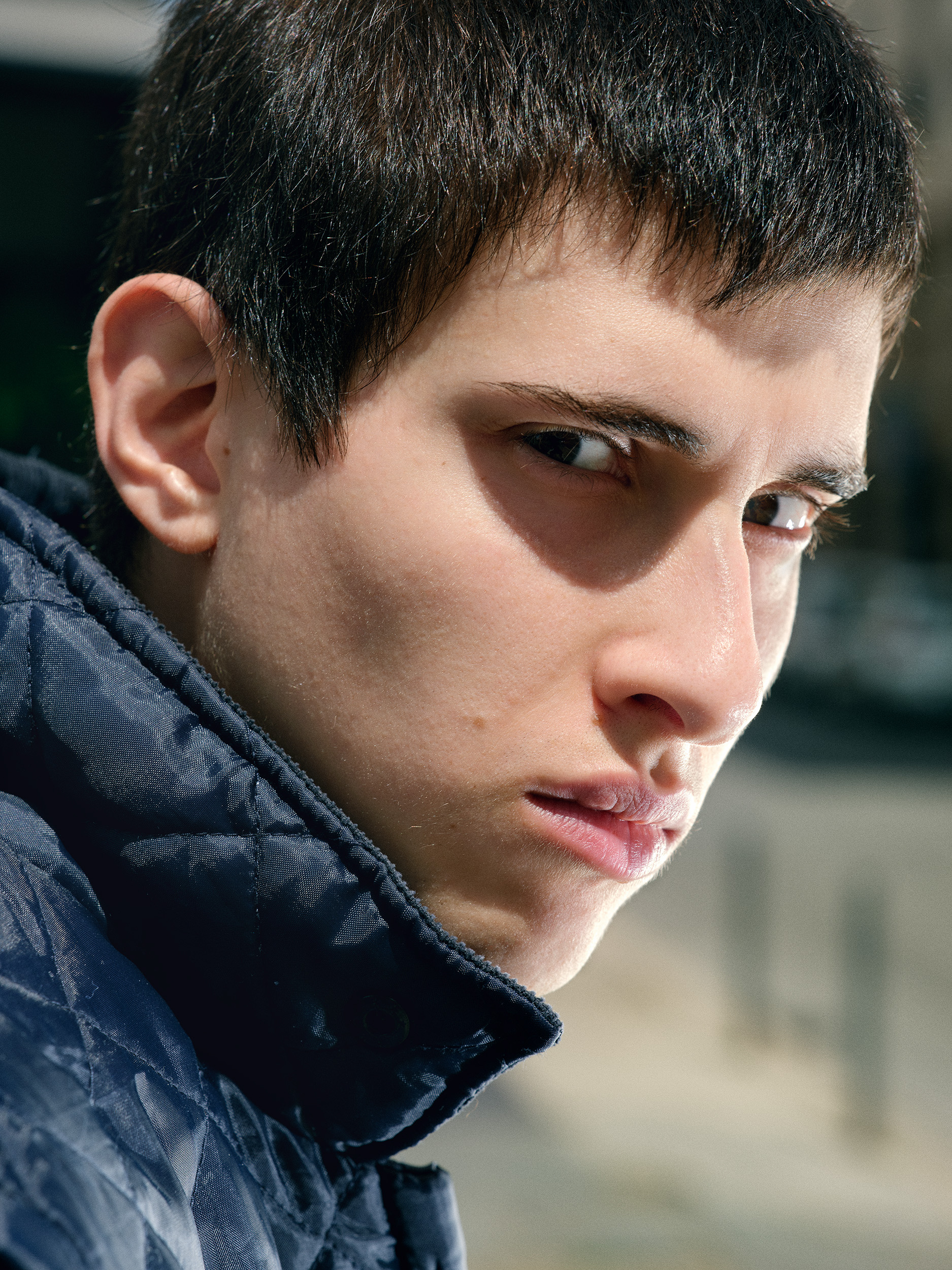
When we think about climate change, we often fall into one of two extremes: either being too optimistic, assuming that technology will save us in the end, or too pessimistic, pained by the idea that every piece of plastic we’ve ever used is still out there somewhere. In the latter case, we become paralysed and distance ourselves from the problem, thinking that we’re unable to bring about change. Many of us are dissatisfied with the minimal effect of our individual actions (such as recycling or not using a car) on the bigger picture, as well as the reluctance of powerful politicians to implement meaningful changes and a political shift to the right in many countries. The problem feels too big, too abstract. But artists have the ability to shape and influence our imagination and offer us something concrete.
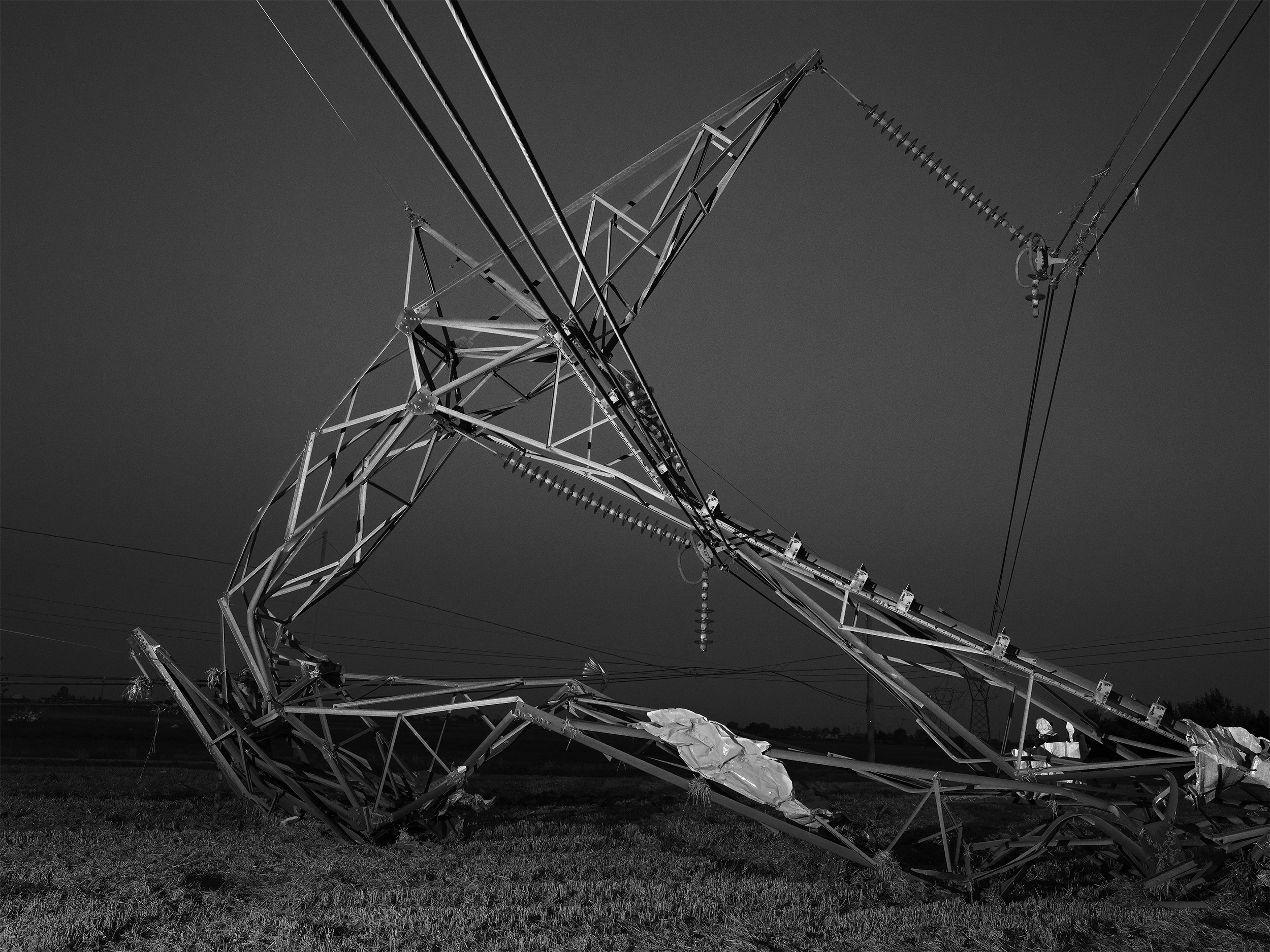
The artists Ana Zibelnik and Jakob Ganslmeier state that, “Images affect the way people think about societal issues. They have an emotional impact and can prompt us to form opinions and take action. Images of environmental devastation, in particular, are often captured from a distance — by drones or focused on the overall scope of natural and infrastructural damage. What interests us is a closer examination of such situations — how do extreme climate events impact individuals? How does the fear arising from such situations contribute to the emergence of hateful ideologies?”
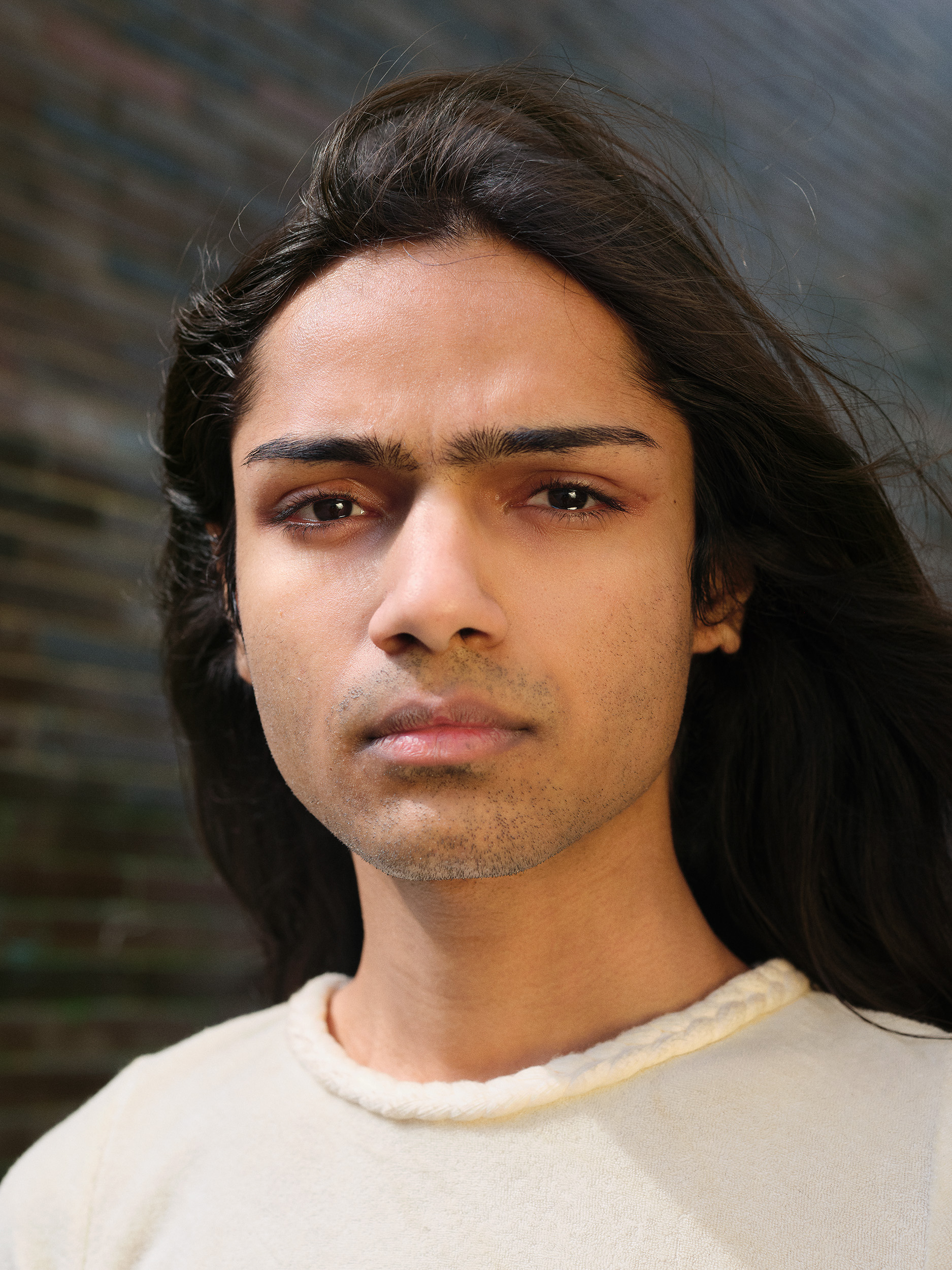
In “Fault Line”, the artists highlight how climate anxiety can be paralysing, but also a stimulus to take action. Their work includes collaborations with young climate activists in Italy and confrontations with Italian policymakers who deny climate change. During their travels through Italy, they documented the consequences of heavy rainfall and flooding, as well as the severe wildfires at the Greek border with Turkey, the largest wildfire Europe has ever known so far. They also spoke with climate refugees and with David Yambio, a human rights activist and founder of Refugees in Libya.
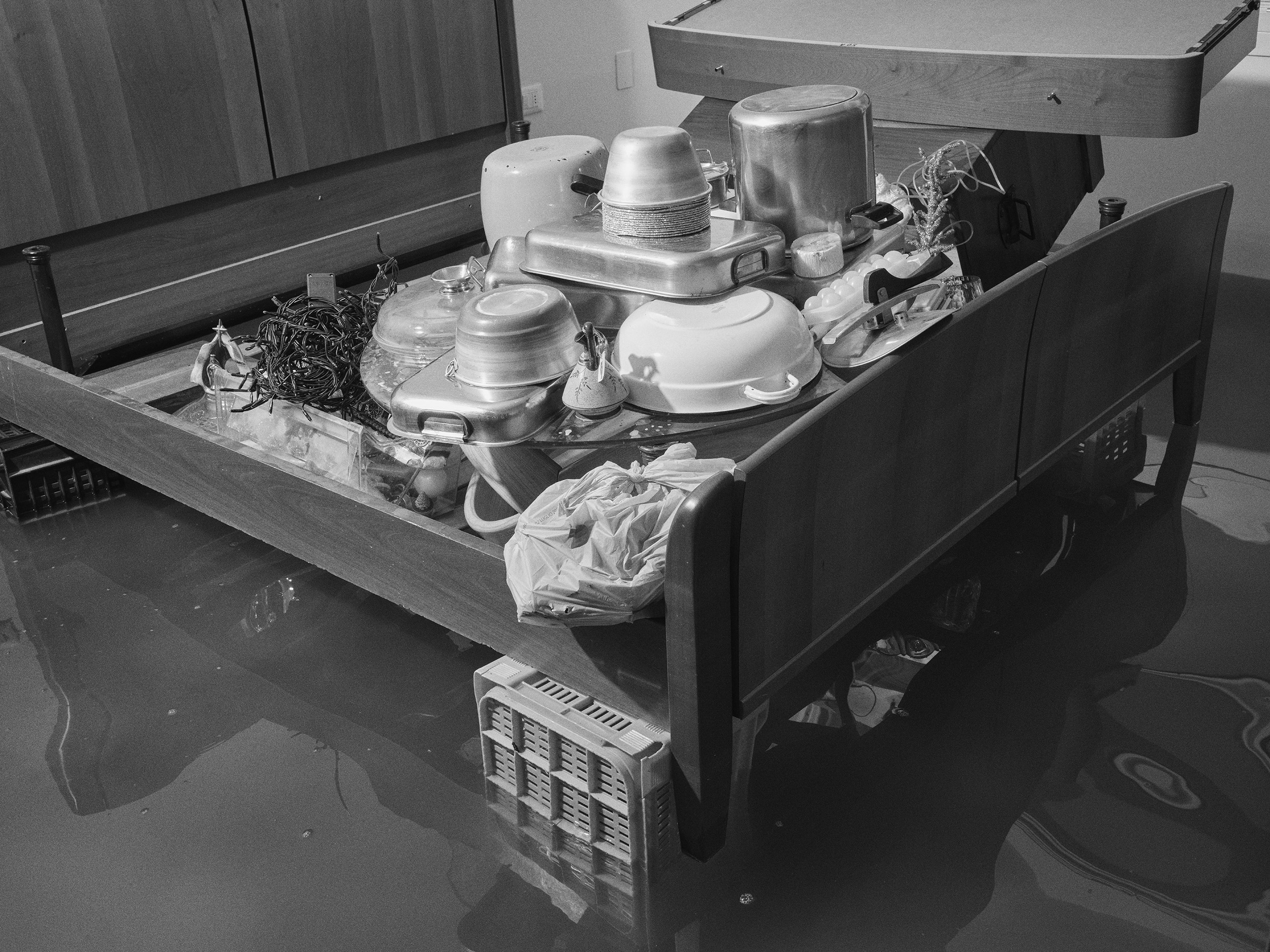
“Fault Line” offers an in-depth exploration of the climate crisis and its social impact. It’s an artistic project, but also a statement. It emphasises the need for action and awareness in a time when the consequences of the climate crisis are becoming increasingly tangible. Zibelnik and Ganslmeier ask critical questions about how the climate crisis — and the accelerating series of disasters — affects individual lives and how this contributes to the exacerbation of social and political polarization.
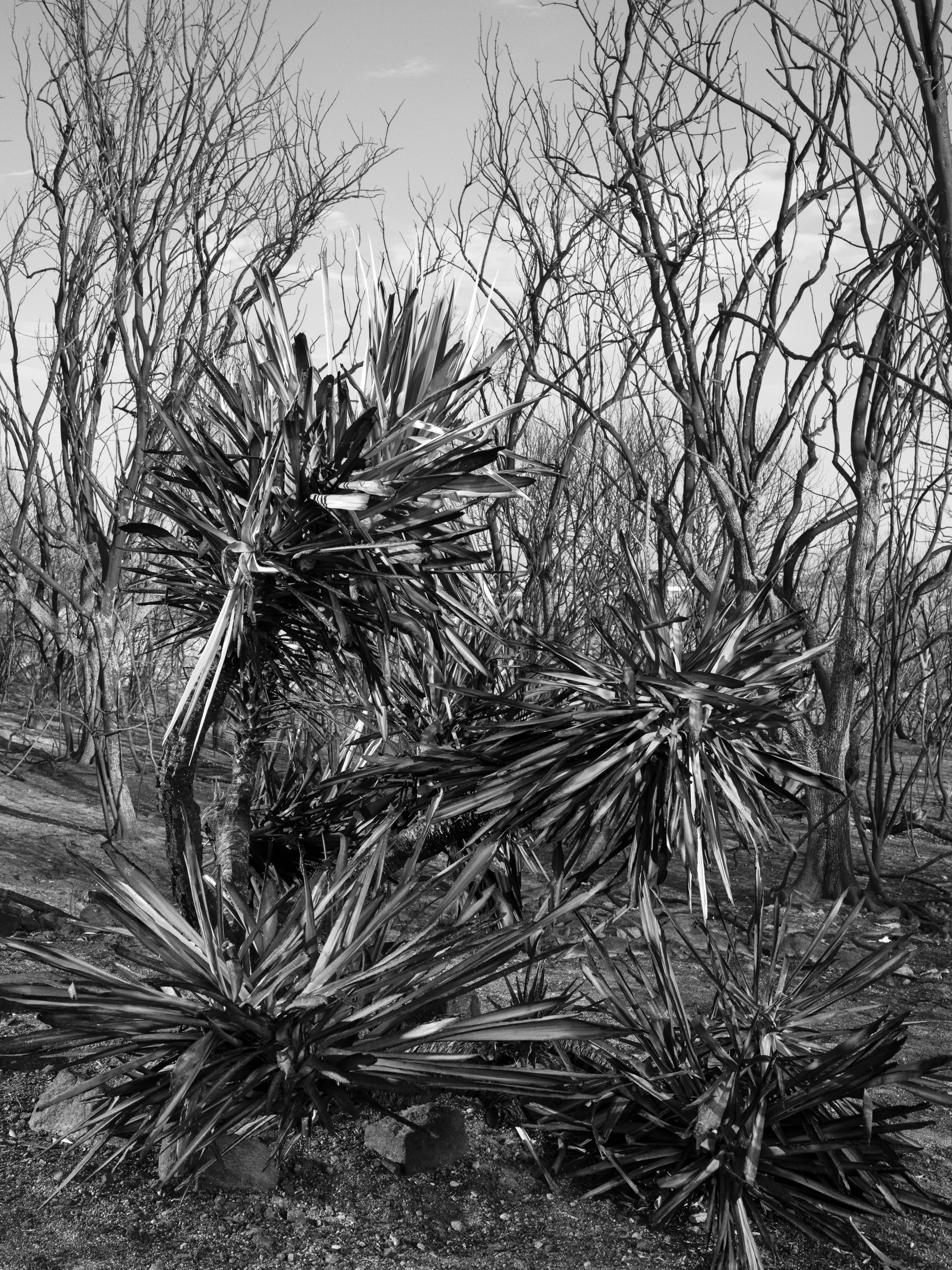
Ana Zibelnik, born in 1995 in Ljubljana, Slovenia, focuses in her work on themes such as global warming, climate anxiety, and its social implications. And what role does white supremacy play in the climate crisis? German artist Jakob Ganslmeier (1990) is interested in the visualisation of radical ideologies and the ways in which visual arts can be a means to counteract radical ideas and start conversations about societal issues with conflicting perspectives.
“Fault Line” by Ana Zibelnik and Jakob Ganslmeier will be on display in the Prospects section during Art Rotterdam.
Written by Flor Linckens
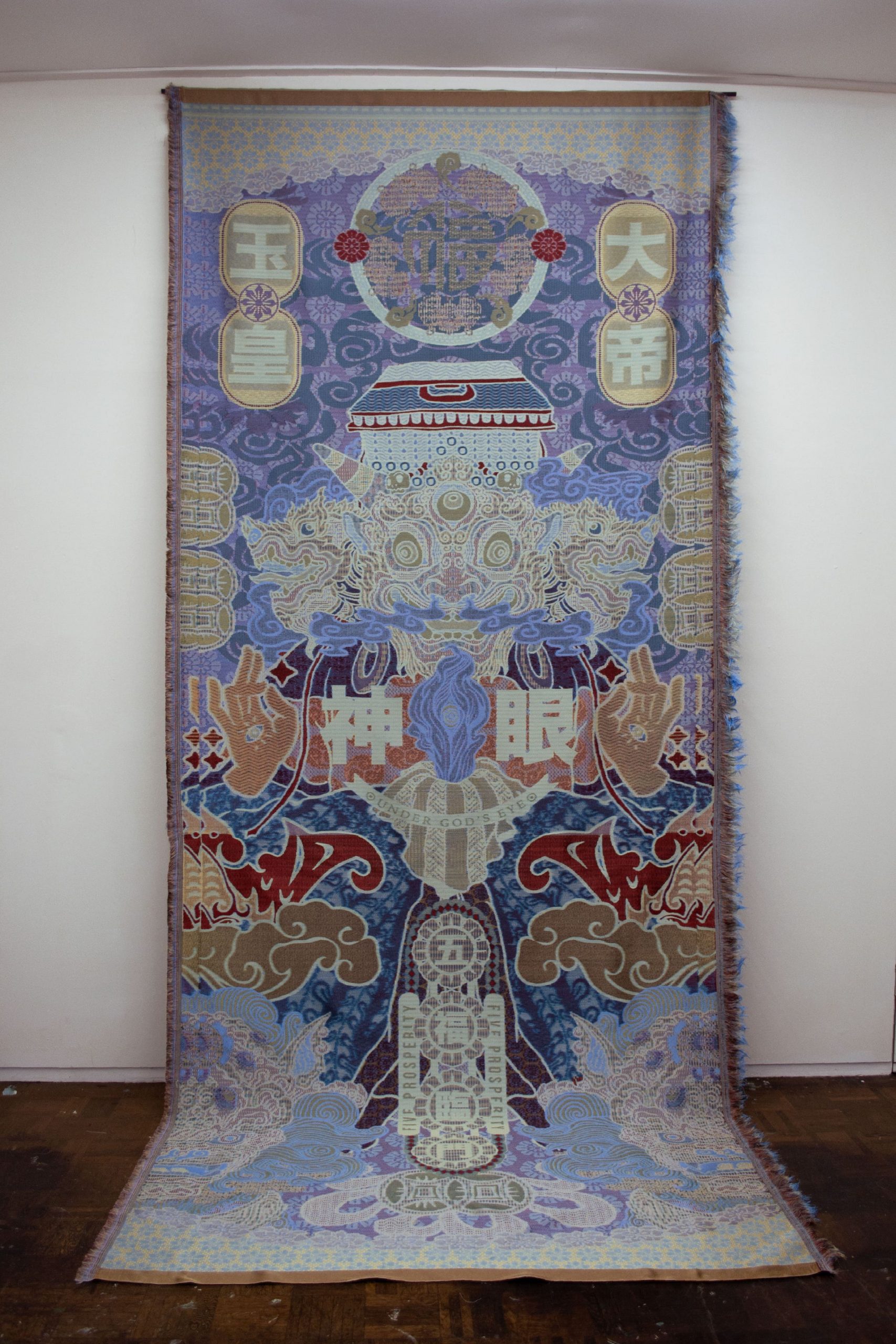
Galerie Ron Mandos is celebrating its 25th anniversary at Art Rotterdam 2024 and sparing no expenses with Best of Graduates Legacy – 25 Years of Galerie Ron Mandos, showcasing 25 young artists who have participated in the Best of Graduates programme at the gallery over the past five years. In addition to serving as a springboard for emerging talent, Galerie Ron Mandos represents over 30 renowned artists, including Isaac Julien, Hans Op de Beeck, Esiri Erheriene-Essi, Mohau Modisakeng and Atelier van Lieshout. Together with the founder and driving force behind the gallery, Ron Mandos, Art Rotterdam is highlighting this milestone achievement. We also look forward to the large-scale booth that will be on display during Art Rotterdam, featuring a special design by Tom Postma Design. Mandos comments, “The art world has no future without young talent. This is why I think that fostering the career development of young artists is so important.”
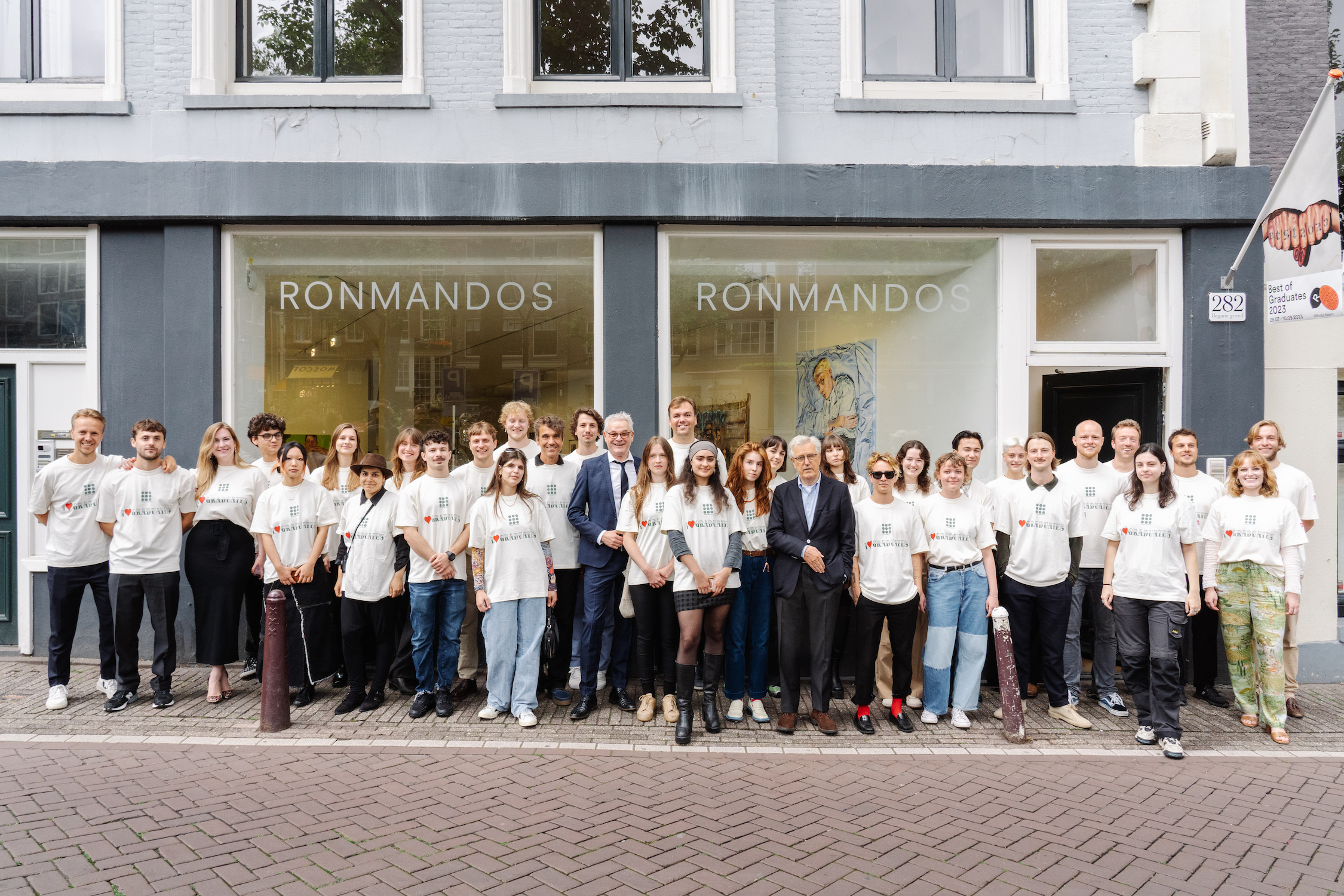
It’s been 25 years since you started Galerie Ron Mandos. Congratulations on this impressive milestone. The gallery is now internationally recognised. What, in your opinion, is the formula for success?
The key to success lies in my complete dedication to art, something I personally believe in wholeheartedly. I don’t let trends or famous names influence me. My approach involves showcasing an engaging mix of established artists and emerging talent. Even the renowned artists I represent, such as Hans Op de Beeck and Isaac Julien, appreciate that I actively invest in emerging artists. Perhaps because they also teach at academies.
From the moment someone enters my gallery to when the artwork is delivered to the buyer’s home, excellent service is paramount. Presentation and content also take centre stage because buyers need the space to emotionally connect with an artwork.
Perhaps most importantly, my artists always come first. I work day and night for them. Throughout the year, we participate in seven to eight international fairs, providing them with a global platform and constantly challenging them to create their best work. At the same time, I give them the freedom to develop special presentations. My gallery began in Rotterdam as a project space, inspired by the Chambre d’Amis of the renowned Belgian curator and museum director Jan Hoet, who invited artists to present art in a domestic setting. This inspiration continues to guide me in giving artists the freedom to fully transform my gallery into their artistic world.
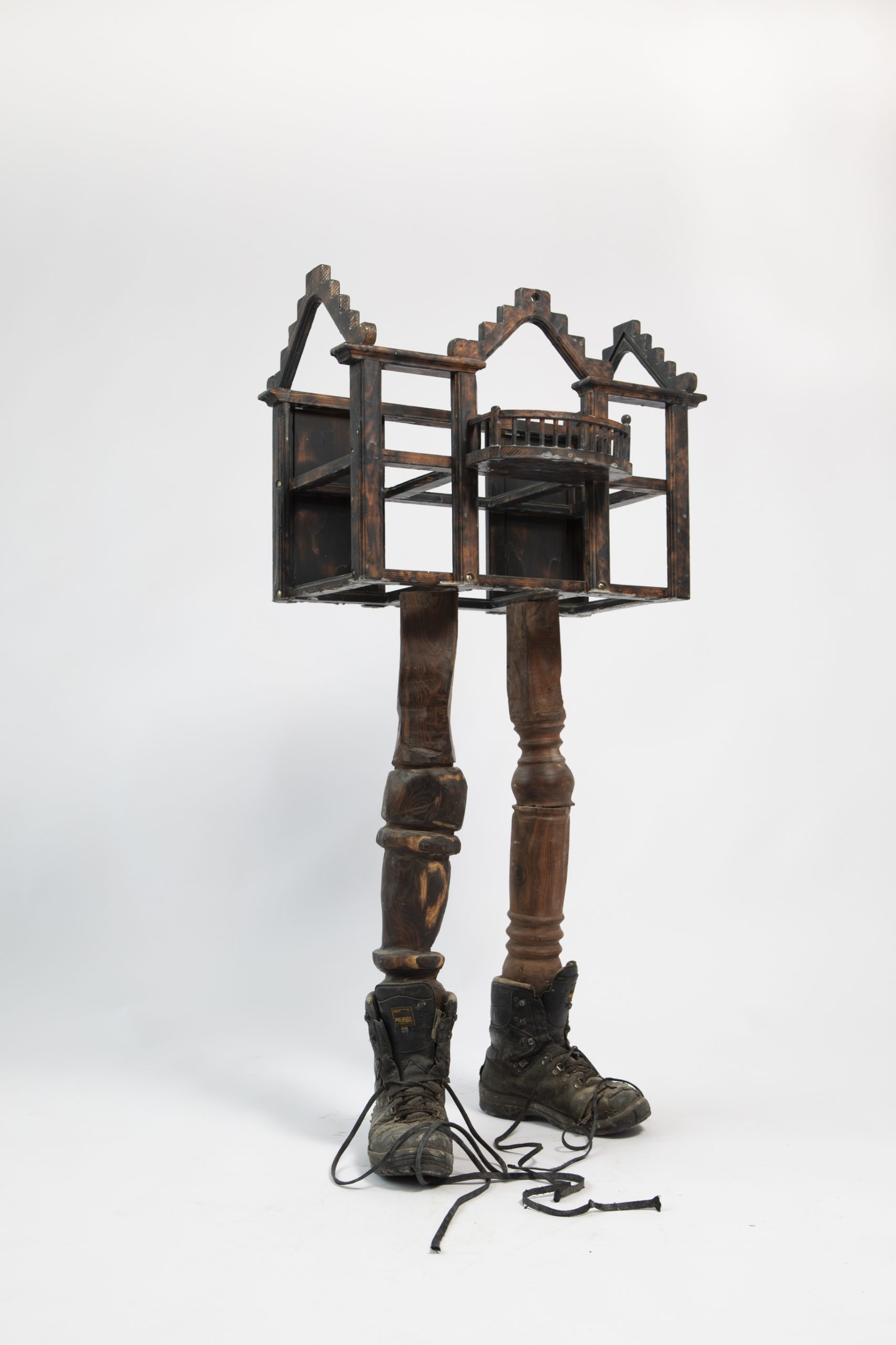
What was your goal in establishing the Best of Graduates in 2008?
The primary goal is to provide a platform for young artistic talent to develop further. The art world has no future without young talent. This is why I think that fostering the career development of young artists is so important. Since 2008, my gallery team and curator Radek Vana have travelled to all art academies in the Netherlands to view graduation projects. We bring the most innovative presentations from Groningen to Maastricht to Amsterdam to showcase to a wide audience. That’s why I founded the Young Blood Foundation in 2018, so we can continue the development of young artists. Every year, Joop van Caldenborgh, founder of Museum Voorlinden, presents the Young Blood Award to an artist whose work becomes part of the permanent collection.
During Art Rotterdam 2024, you are putting 25 artists from the Best of Graduates of the past five years in the spotlight. Can you elaborate on all or a few of these artists and their work?
Our Best of Graduates Legacy at Art Rotterdam includes a diverse mix of artists, as is customary in a Best of Graduates presentation. We are showcasing, among other things, new paintings by Matias Salgado (Young Blood Award winner in 2023), sculptures by Bart Pols (Best of Graduates 2021), video artwork by Thom van Rijckevorsel (Best of Graduates 2019), textile work by Marcos Kueh (Young Blood Award winner in 2022) and ceramic work by Anni Mertens (Best of Graduates 2019). I would like to emphasise the versatility of these artists. It inspires me every day how these artists can be so innovative with different techniques.
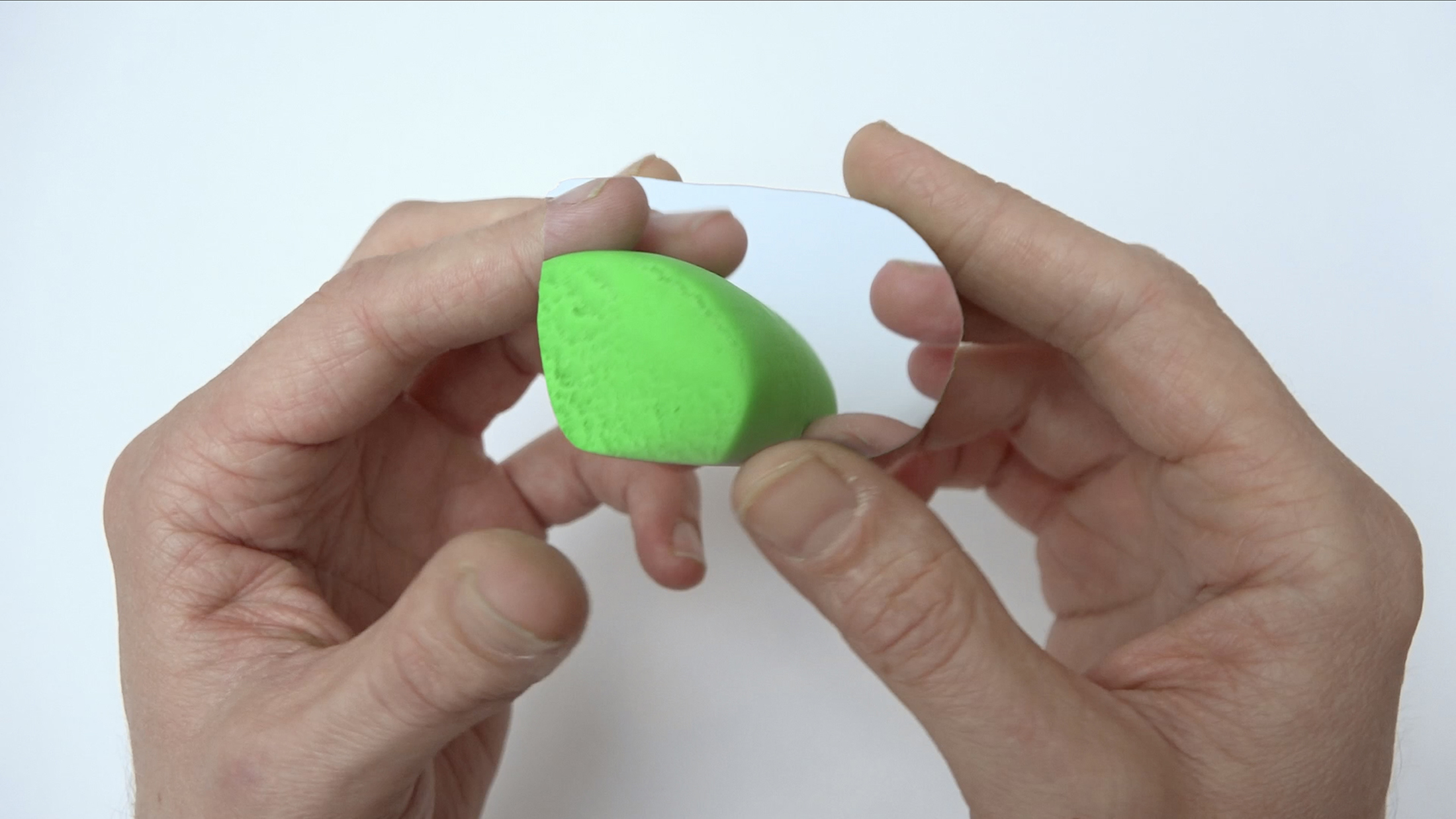
Can you give us a sneak peek of the booth presentation during Art Rotterdam?
It promises to be a surprising presentation. Together with the director, Fons Hof, we have decided on a special booth that is larger than usual. We plan to create a booth measuring 100 square metres, a real gift for the young artists we are spotlighting. The design is by Tom Postma and his fantastic team, who always create stunning designs for leading fairs such as Art Basel and Tefaf. The booth clearly reflects Postma’s high-quality design and the varied art of the young creators.
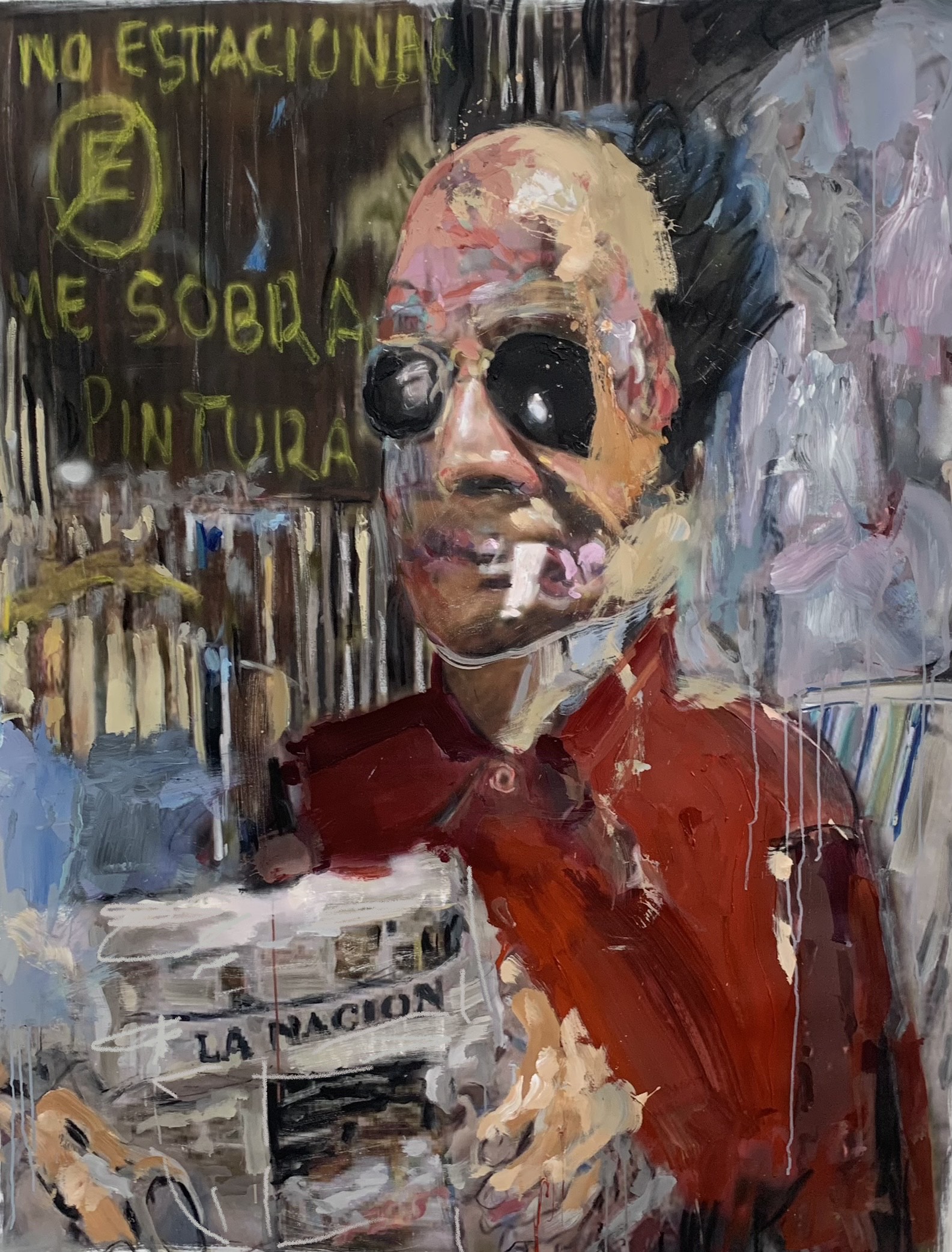
What sets Art Rotterdam apart from other fairs that Galerie Ron Mandos participates in? What developments have you noticed in the Rotterdam art scene?
Rotterdam is my hometown, so to me, Art Rotterdam feels like coming home. My gallery opened 25 years ago in Rotterdam and from the very beginning, we have been closely affiliated to this fair. It is sometimes said that Rotterdam works hard while Amsterdam spends money, but fortunately, we are seeing a change here. Over the years, beautiful new initiatives have emerged, such as BRUTUS, where art creators get carte blanche to experiment. For a few years now, there has been a collaboration with the Ron Mandos Young Blood Foundation, which selects an artist every year who can then work in this fascinating art setting. Also, the various initiatives at Art Rotterdam, such as Prospects, which annually showcases over 80 artists who have received financial support from the Mondriaan Fund, are a beautiful example of a platform for emerging talent during the fair. And new galleries will be participating in the New Art Section, which spotlights young artists. Through such initiatives, Rotterdam continues to position itself as a vibrant creative city that is continuously evolving. Art Rotterdam makes an essential contribution to this.
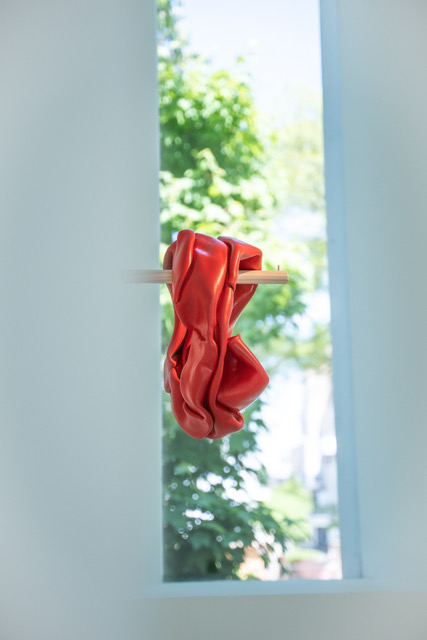
Best of Graduates Legacy – 25 Years of Galerie Ron Mandos will be on display during Art Rotterdam at the Van Nelle Factory from 1-4 February 2024, with a private preview on 31 January.
Best of Graduates Legacy is generously supported by Art Rotterdam, Vormmakers, Tom Postma and the VandenEnde Foundation.
Written by Pienk de Gaay Fortman
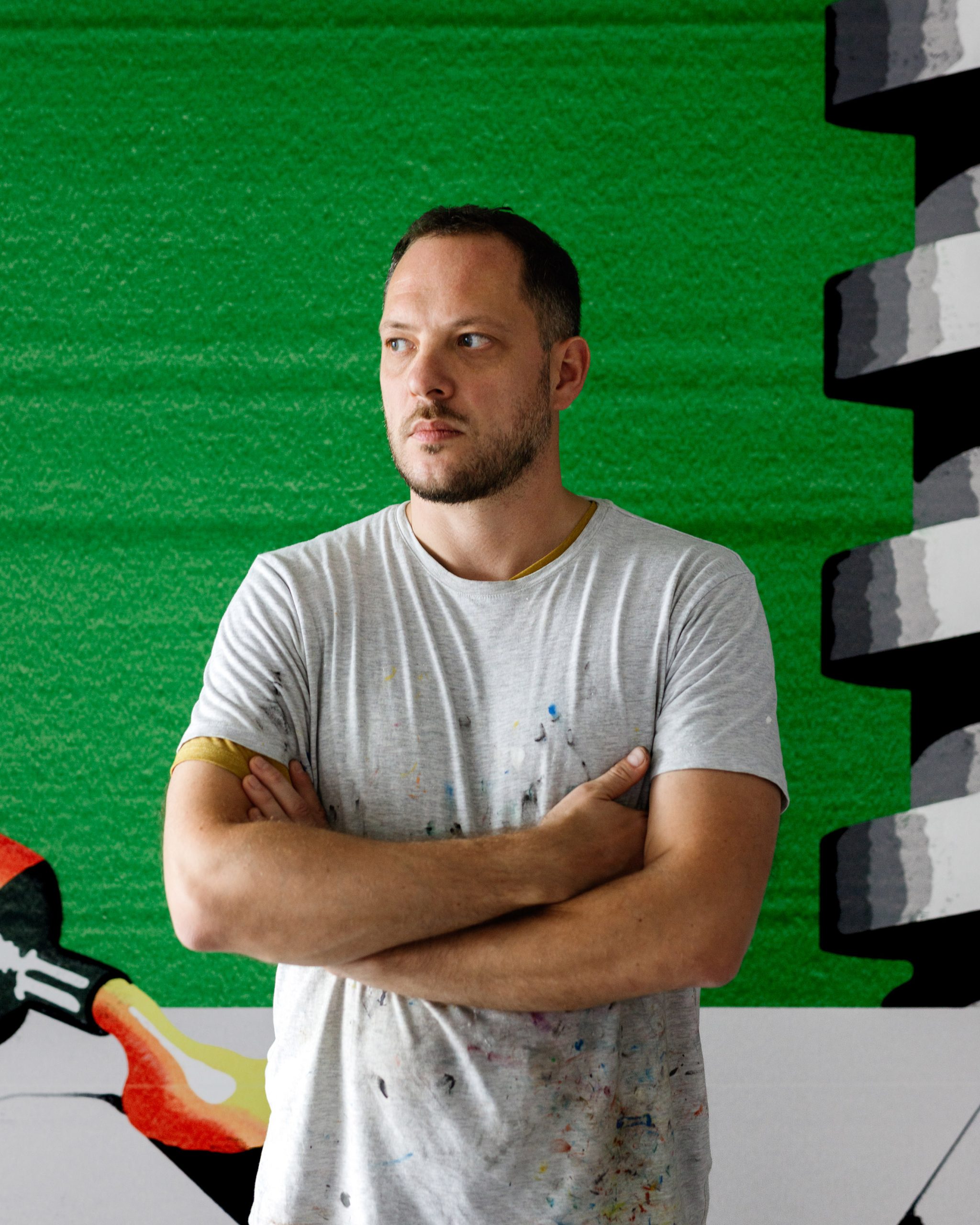
At Art Rotterdam, acb Gallery from Budapest will presents the work of Hungarian artist Róbert Batykó in the New Art Section. There, the artist will exhibit his latest series of oil paintings and collages, some of which he created during a residency program in gastatelier Doc4 in Haarlem.
In his practice, Róbert Batykó blends traditional techniques with digital influences. His style is characterised by the mechanical scraping of paint over the canvas in the final stage of the process, resulting in an ultra-thin layer of paint. For this, the artist uses a self-built machine, a combination of a press and a blade. He’ll find himself surprised by the final outcome, over which he has only partial control.
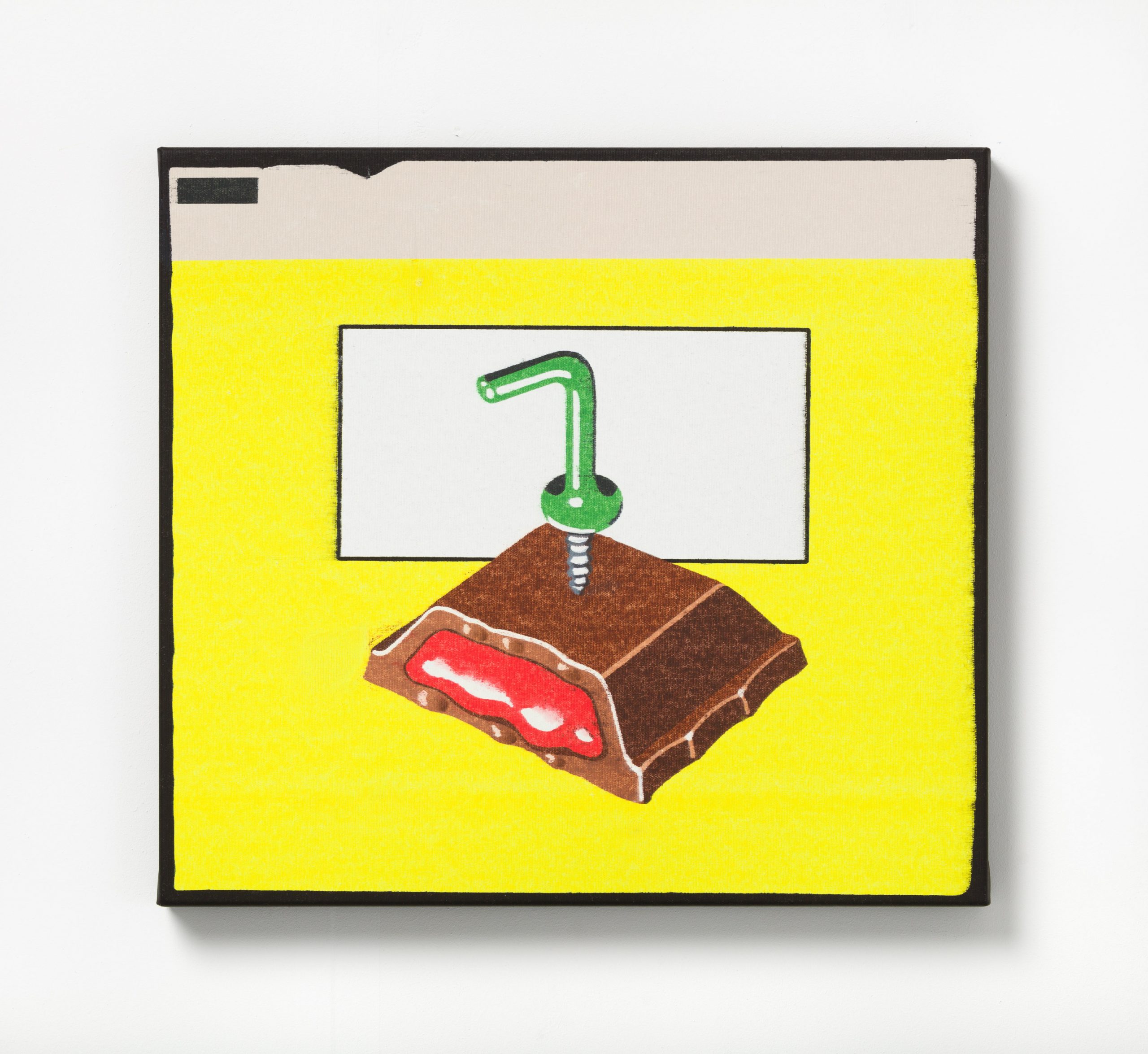
Batykó’s practice lies at the intersection of abstraction and realism, between the digital and the physical. He transforms digital images into often large-scale paintings, that are occasionally reminiscent of software interfaces. The artist utilises found objects such as packaging materials, old VHS tapes and magazines, as well as step-by-step illustrations from vector drawing manuals. He is particularly interested in shapes and transforms these materials by removing them from their original context. For this part of the process, he uses stencils and cutting plotters.
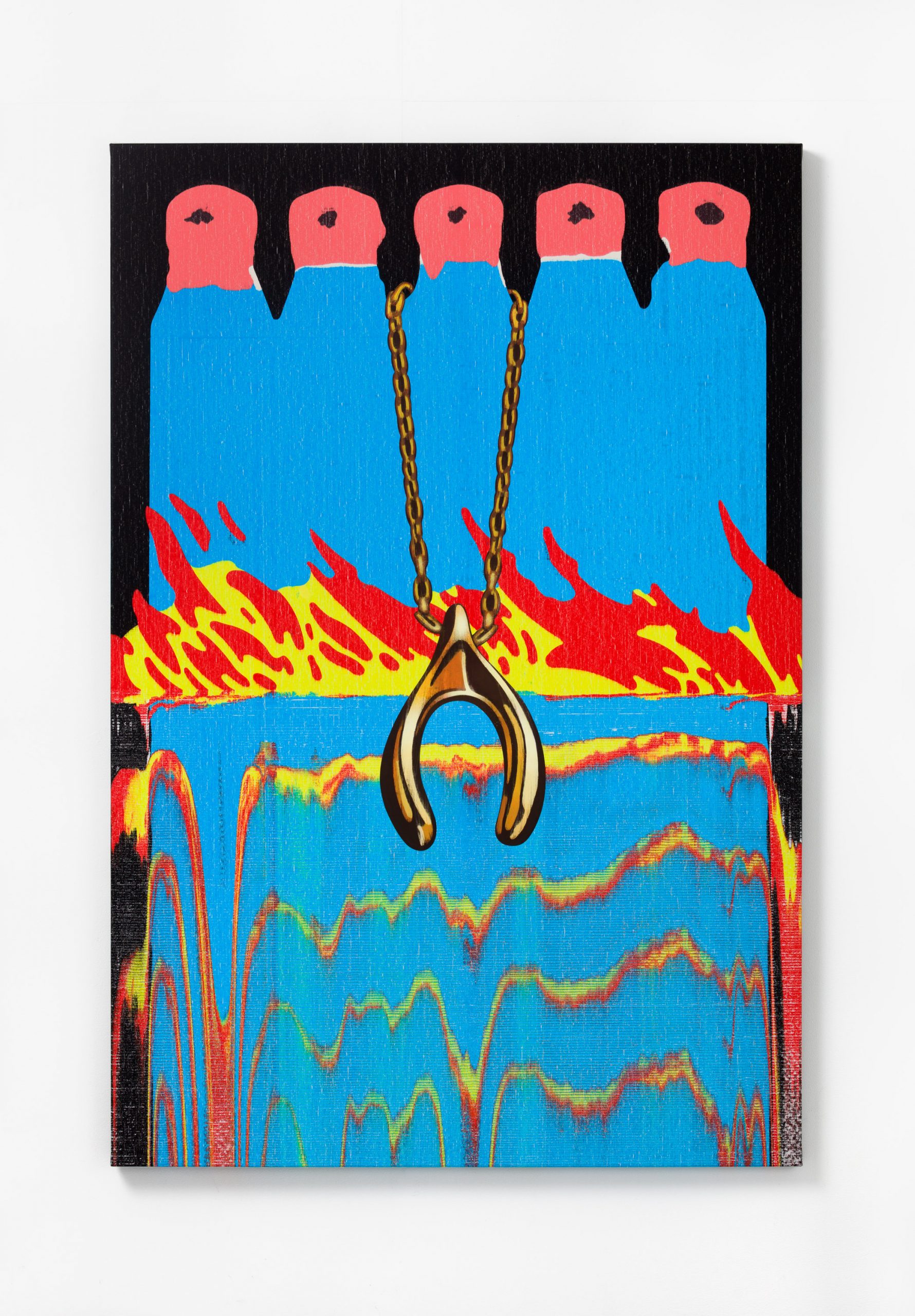
The resulting compositions sometimes appear strange and somewhat surreal, yet they are generally also quite recognisable. The figures in his latest works are not human, but seem to possess anthropomorphic qualities nonetheless. They have a certain degree of abstraction but are, at the same time, clearly figurative. This gives viewers the freedom to offer their own interpretations.
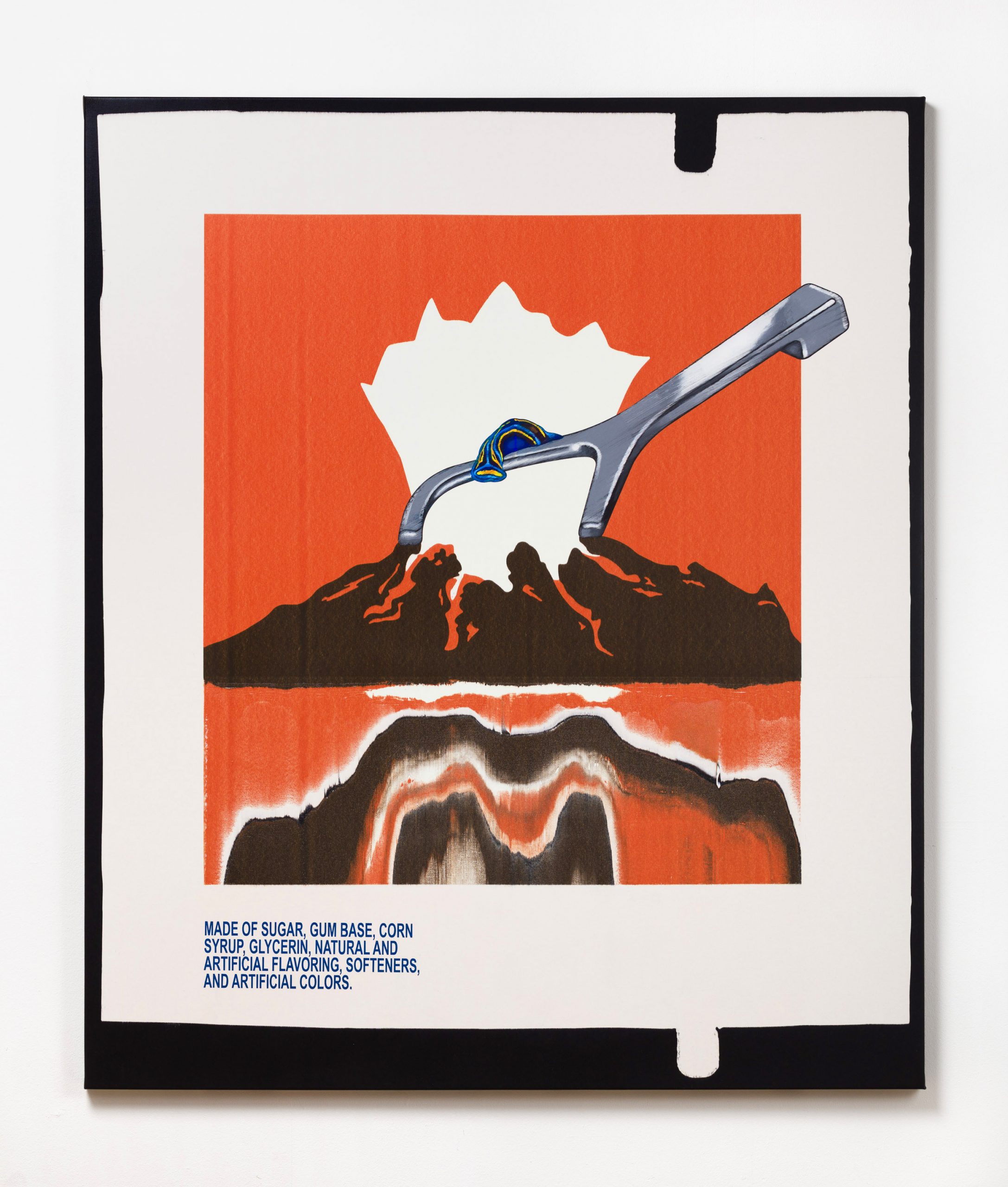
The artist’s practice is informed by themes such as our consumer culture — and its visual appeal —, the production and manipulation of digital images and the so-called ‘technological subconscious’.
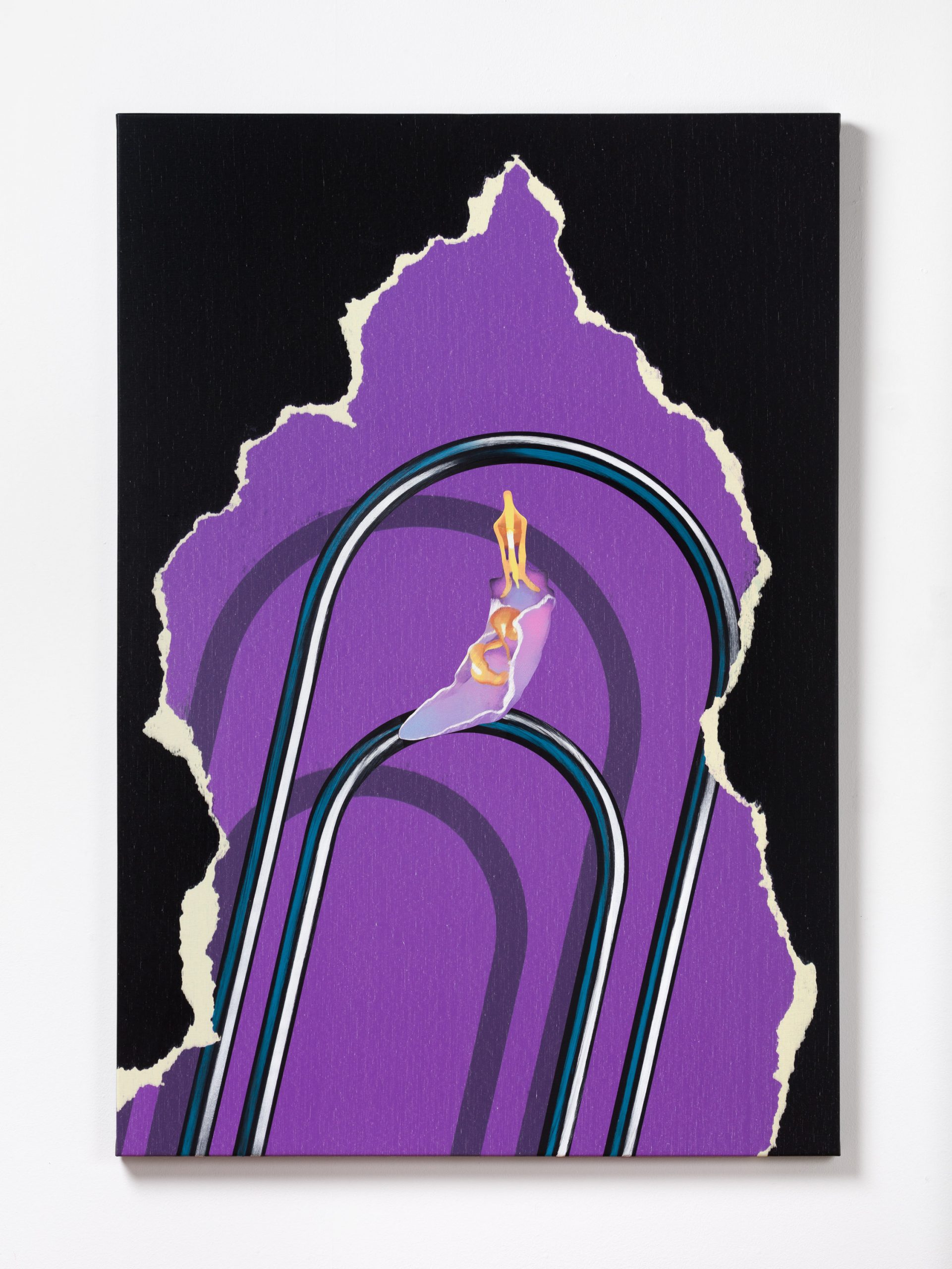
Batykó obtained a Master’s degree in Painting at the Hungarian University of Fine Arts in Budapest, followed by a DLA (Doctor of Liberal Arts) program at the University of Pécs. His work has been included in the collections of the Hungarian National Gallery (Magyar Nemzeti Galéria) and the contemporary Ludwig Museum in Budapest. In 2022, his work was featured in a group exhibition at MODEM (Centre for Modern and Contemporary Arts) in the Hungarian city of Debrecen. He received several awards, including a Strabag Art Award (2007), a Leopold Bloom Art Award (2011) and a Hungary Emerging Prize (2018). The artist has lived and worked in the Netherlands for several years.
The work of Róbert Batykó will be on display in the New Art Section during Art Rotterdam, presented by acb Gallery from Budapest.
Written by Flor Linckens
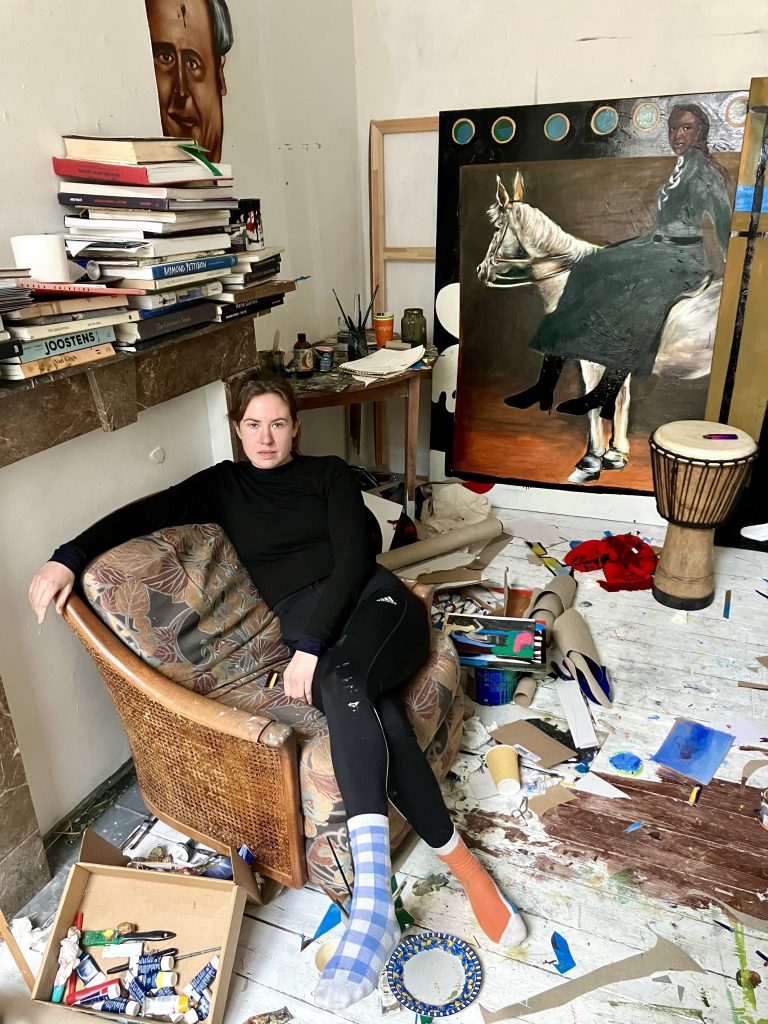
Interview with Louise Delanghe
“If painting is the sea, I want to be the ultimate surfer.” Every decision and consideration must be visible to Belgian artist Louise Delanghe (BE, 1994), as she believes that therein lies the poetry of a work of art.
Delanghe is considered a great painting talent, and in her work, she leaps from genre to genre: from full-length portraits to work on cardboard and from classical nudes to textual work. Pizza Gallery is presenting an overview at Art Rotterdam of the work Delanghe has created so far, in addition to work from her newest series, Weeping Wham, which she describes as “the elusive beauty of the cherry on an overly sweet whipped cream cake.”

Congratulations on your presentation at Art Rotterdam! What can we expect?
Thank you! Color is the workhorse in my art, an obsession, joy and tribulation all at the same time. It is the binding agent that connects the layers of stories and characters in my paintings. At Art Rotterdam, I want to emphasise this with an eclectic mix from different periods in my journey. For many visitors, it will be their first encounter with my work and my intention is to create an exciting ‘totality’ at the fair.
Is it a logical continuation of Boulevard Angel, your exhibition earlier this year at Pizza Gallery, or have you started a new project?
I am mostly showing recent work. The series embodies a succession of standing figures and busts with a penetrating yet tender gaze. Some time ago, a painting by William-Adolphe Bouguereau that I found online, entitled The Little Shepherdess, really caught my eye. In addition to his less interesting biblical scenes, he also devoted a lifetime to painting female figures, all with a certain aura about them, with an extraordinarily vulnerable, romantic, contemplative, melancholic and sometimes spellbinding expression. A kind of rom-com avant la lettre, a feeling that sometimes overcomes me in everyday life. It moved me. The Little Shepherdesswas the torch that brought a whole range of other examples to light, resulting in a new series of paintings entitled Weeping Wham. The elusive beauty of the cherry on an overly too sweet whipped cream cake may best describe what the viewer can expect to see. I hope my work evokes a certain witty fragility people can identify with.
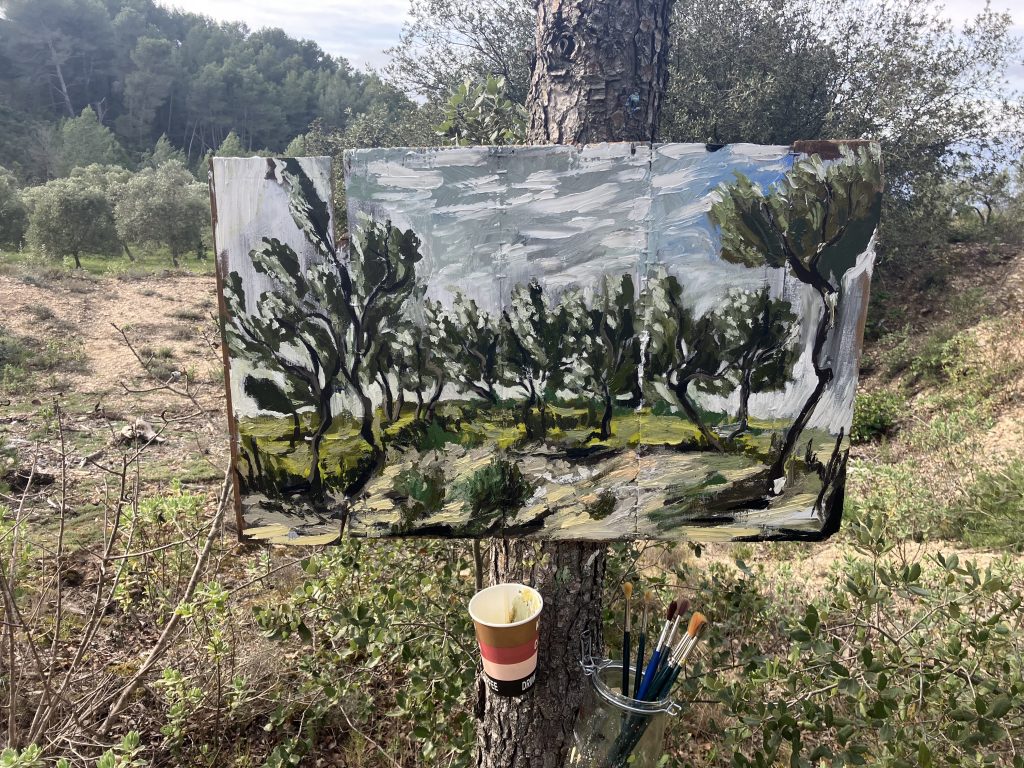
For Boulevard Angel, you created smaller paintings on reclaimed wood. Why did you want to use reclaimed wood and is experimenting with different mediums something you enjoy?
The paintings in the Boulevard Angel show were created in three different places in Southern France. Painting in the open air was a revelation for me. As a child, I lived near Nuenen, the village where Vincent van Gogh painted his famous Potato Eaters. Vincent was my first encounter with painting, so it was particularly special to work in the region around Arles and follow in his southern footsteps. Nature makes you think and act differently. It didn’t feel right to buy prefab canvases. The medium had to be something with a past. I found a dealer in Saint-Andiol, a rather rough type. He bought lots in India, the contents of which were always a gamble. Some of them were handmade furniture, objects and curiosities with a colonial past, and the rest were wood from demolished dilapidated buildings, some with beautifully hand-painted motifs. The pieces of wood were selected based on the size of my easel and their weight, as everything had to be carried with me outdoors. After a bit of negotiation, cash in hand and being a bit taken advantage of, I was on my way.
My thoughts often went to all the impressionists who painted outdoors. You are at the mercy of the weather, especially the mistral wind that sweeps through the landscape in this region, which determined the direction of my work several times in an amusing way. I had to paint faster and differently than in a studio, in a single motion like a snapshot. Coincidence brought me to the medium – or vice versa, as is usually the case.
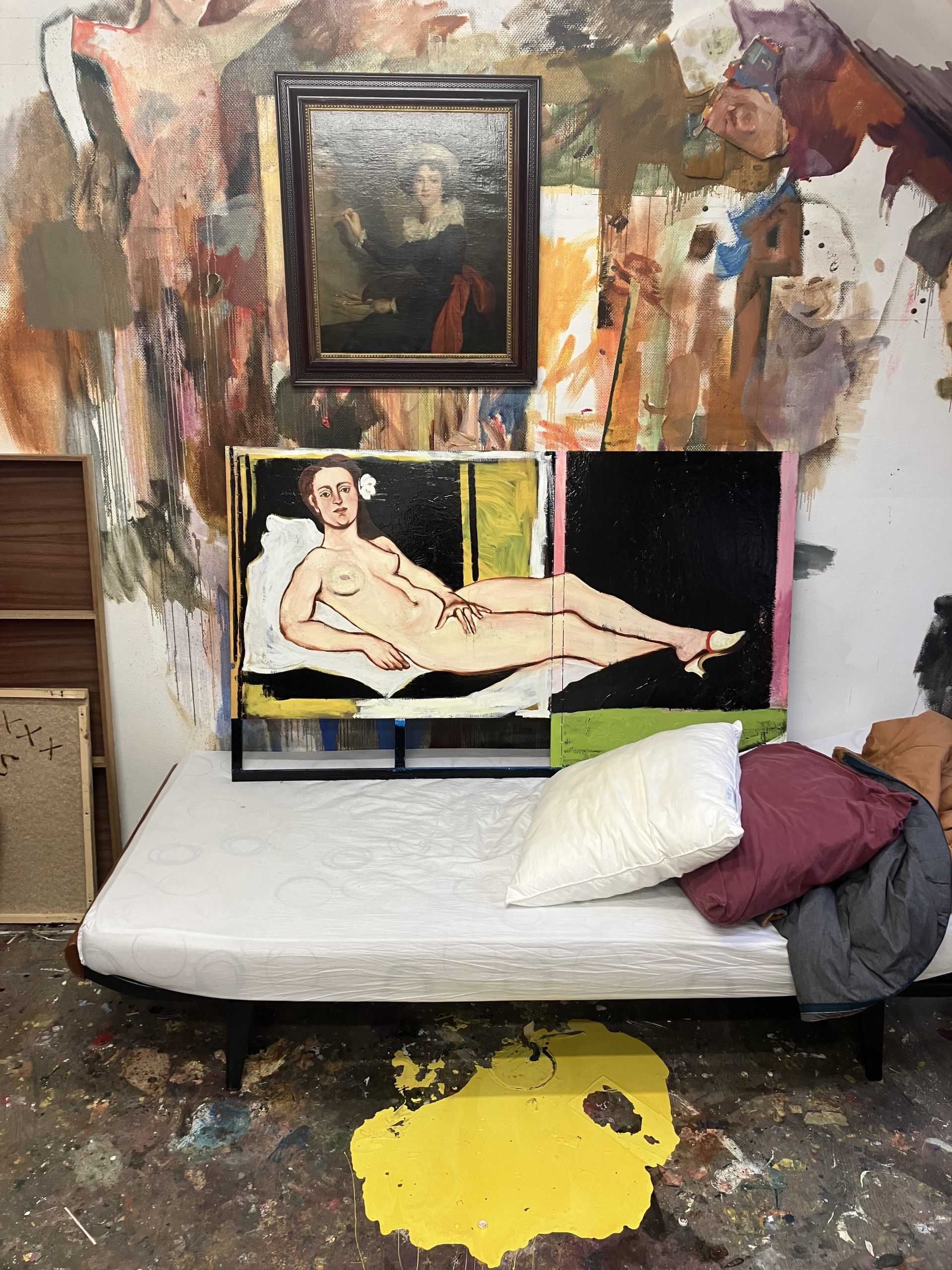
Looking at your Instagram account, your work seems to go in all directions, from full-length portraits to work on cardboard and from classical nudes to textual work. Do you think there is a common thread in your work?
I suspect that such switching is rooted in my character, a ‘hopper‘ as they say. I become restless if I follow the same path visually and verbally for too long, a healthy dose of chaos then takes over me when I’m working. If painting is the sea, I want to be the ultimate surfer, always looking for the right wave in time and space. I want every gesture and moment of decision to be palpable in my paintings.
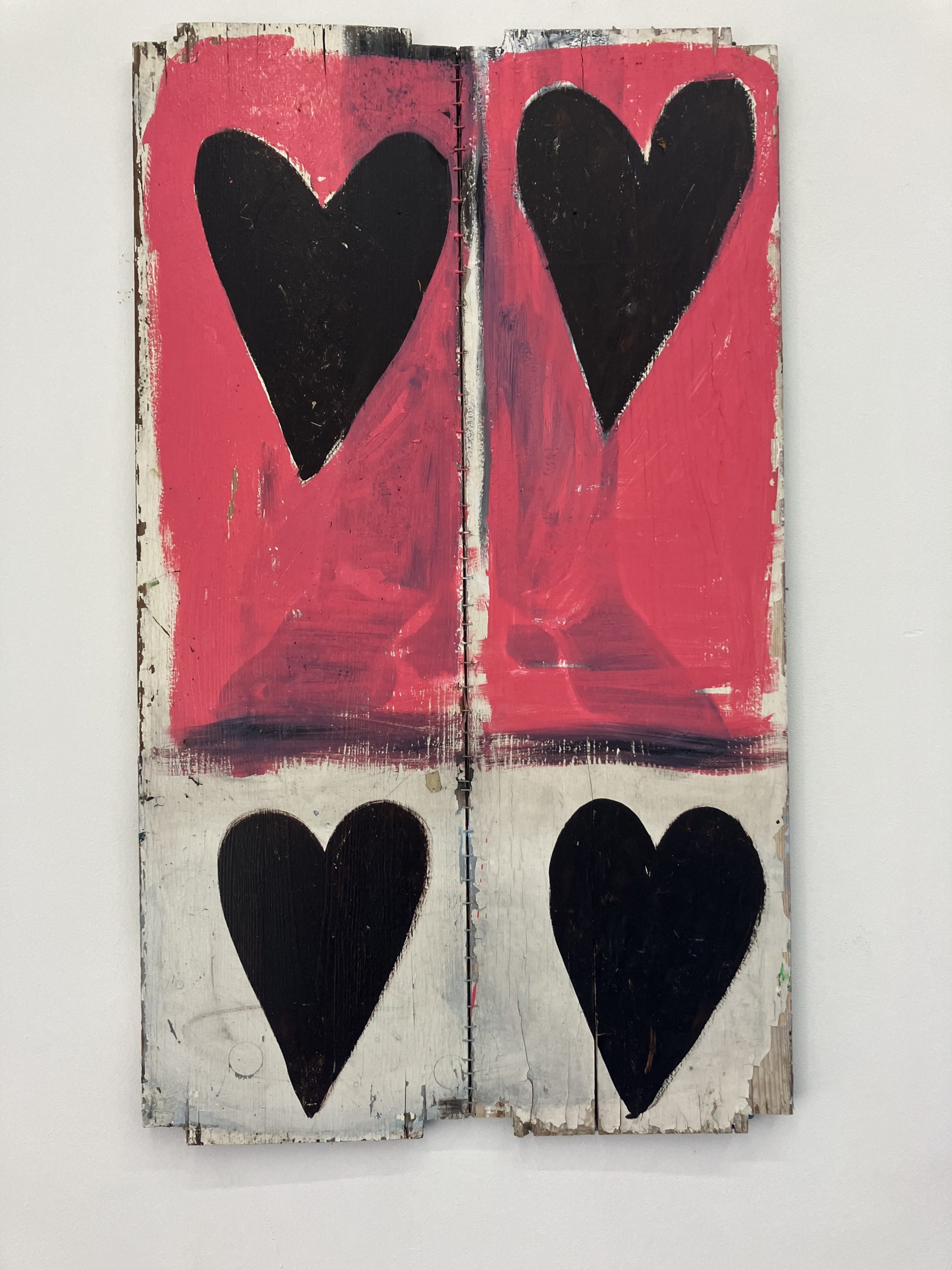
Why is that important to you?
It is a feeling I am also looking for when I stand in front of a work of art, an inextricable finishing touch that makes an image unique and where I believe the poetry lies.
You are now 29 and still at the beginning of your career. What do you hope to achieve in the next five years?
I am convinced that if you do something with passion, things will always cross your path at the right time. Over the next five years, I want to mainly continue to follow my own course, wherever the wind may blow it.
Written by Wouter van den Eijkel
Sam Hersbach about the importance of meeting rooms and skirting-boards for his practice
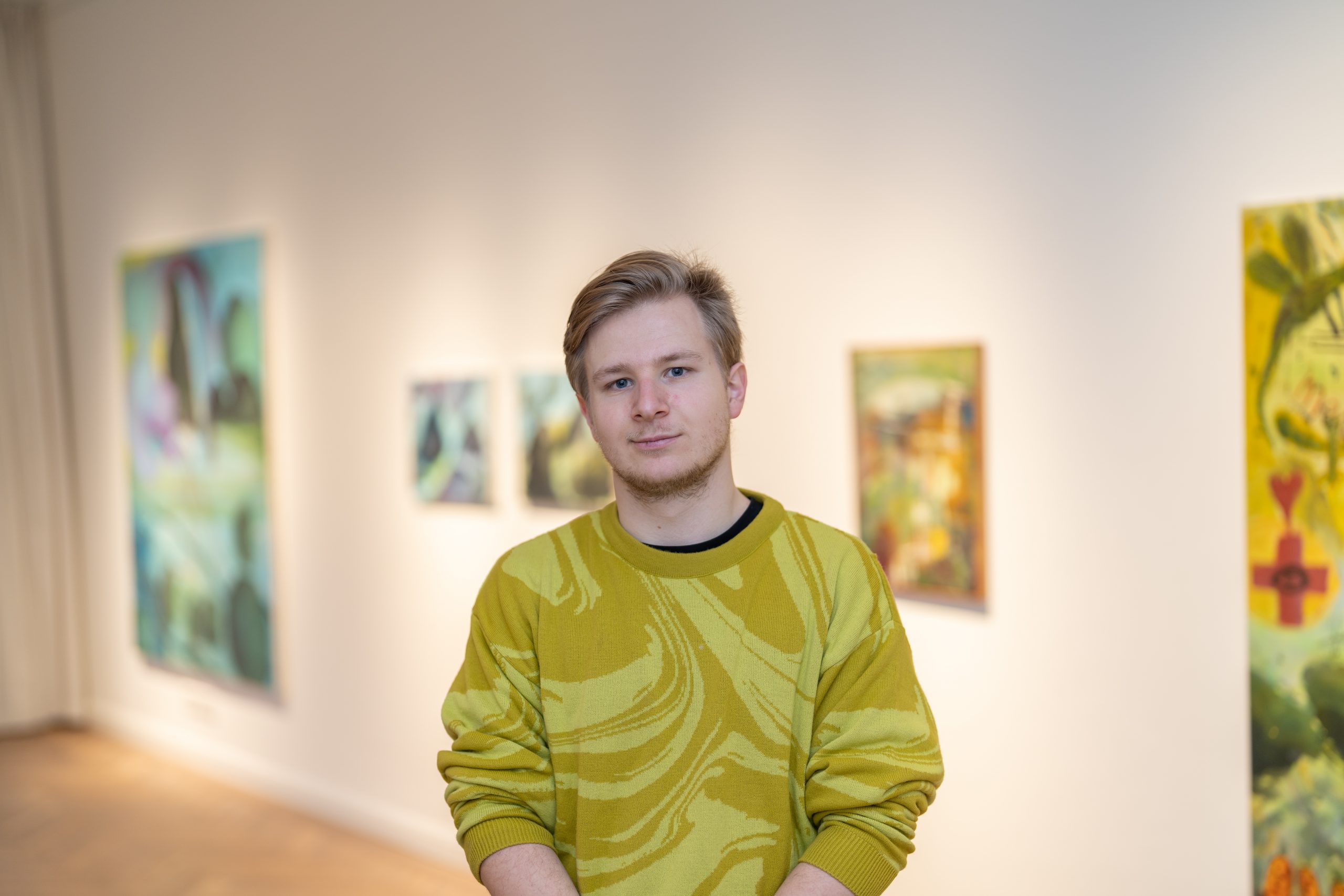
“There is increasingly more reality in my paintings,” says Sam Hersbach, the painter who gained recognition for works of art featuring dragons and aliens. His presentation at Prospects is based on the meeting room of the Mondriaan Fund. The Distribution Hall where Prospects takes place also appears in one of his works. These two spaces are significant for his artistic practice. As can be expected from Hersbach, he manipulates these spaces and shadows and plants take over the canvases. Hersbach also adds a plinth beneath his work, which he believes adds an extra layer of information and imagination to the overall piece.
Congratulations on your presentation at Prospects. What can we expect?
Thank you very much! For Prospects, I am showcasing a series of paintings and an engraved plinth. I have copied the meeting room of the Mondriaan Fund and also done a painting of the Prospects exhibition space at the Van Nelle factory, which is depicted using a digital three-dimensional sketch from the architectural firm before the space was finished. I have also made a painting combining these spaces with imaginative creatures, realistic self-portraits, varying scales – sometimes on a scale of 1 cm, other times 10 kilometres – images I’ve photographed of a wild sea and drawings of drones, periscopes, mosquitoes and other animals. I used homemade pigments, such as dried flowers from my studio building’s garden, weeds from my street or plants that form a connection with the painted space. There is also a plinth engraved with drawings and texts beneath the work to integrate it more into the space itself, an extra layer for communication, representation and imagination as it were.
Why did you decide to paint a meeting room?
Normally, my work starts with a concept and develops through different layers of fantasy and reality: drones, submarines, deep-sea creatures, lost people amidst alien-like mega butterflies, and so on. With the series of meeting rooms, the starting point is an existing space, one that is important for my artistry and exhibitions. My studio space, exhibition spaces – each has its own story. These spaces transform: beings walk through them and shadows and plants take over the canvas. They reference influential environments, either for me or art in general. The meeting room has been essential in my process towards exhibiting at Prospects and is essential for my participation in the exhibition. This is also the last time Prospects will be held at the Van Nelle factory, so it’s a space that has served as a stage for many people.
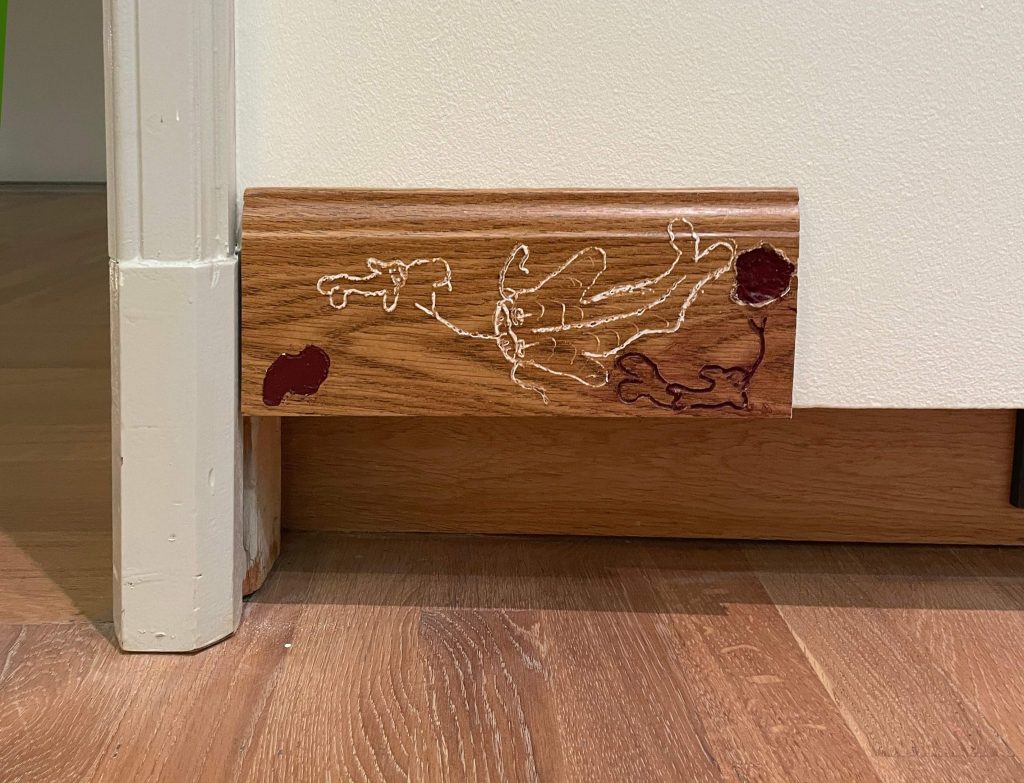
You now also create work on plinths. Painters typically want to make larger canvases, but this is an unassuming surface. How did you come up with this idea?
The plinths originated from the murals I created a few times. I was asked to explore new supports to tell stories. A mural is already more connected to architecture than a conventional painting because it blends into the space. A plinth is a natural progression. On a plinth, you can write source references, show sketches or engrave titles. Compared to a conventional painting, a plinth is a much less dominant support. It’s also a way to add an extra layer of information and ‘fantasy’ to the whole.
A recurring theme in your work is power imbalances and human hubris in technological developments. Does that still play a role in your most recent work?
My work has evolved over the years and explored multiple themes. Technological developments, like the Dutch-acquired Reaper Q9 drones for submarines and genetically modified mosquitoes, appear in my works. The paint itself plays a crucial role. The emotion in the paint and brushstroke, the play of light with colour and the chosen pigments engage in a dialogue with the underlying narratives. Between the plinth and conventional painting, there is also a power dynamic of information delivery and tradition in art. The tradition of an isolated canvas in a space, the white cube idea of art, stands in contrast to an element that blends more into the space.
I’m also wondering whether the emphasis on power dynamics conceals a broader story you wish to tell?
The work has layers of fantasy and layers of reality, from conventional fantasy figures to figures inspired by reality. In each exhibition, the works vary, from mountain landscapes that don’t exist to work that relates to the exhibition space or award. To give an example, for the Ary Scheffer Prize (together with Afra Eisma and Niek Hendrix) at the Dordrechts Museum, I created work about Ary Scheffer’s mother, Cornelia Scheffer-Lamme. She was a fantastic artist, but unfortunately is much less famous than her son. I had the honour and good fortune to create work about her and her son in tribute to Cornelia Scheffer-Lamme’s work and motherhood/parenthood in general. I also had the opportunity to select work from the depot and hang it next to mine to curate an exhibition.
What also characterises your work is a certain relativising humour. Why is that? My work is like a comedy, serious yet humorous. It is chaos hidden behind cheerful scenes, pleasant colours with anxious figures. There must be balance in the works, which should be simultaneously accessible yet repulsive.
I think your visual language has become more concrete and ‘everyday’ in recent years. Previously, a dragon might appear in your work, but the canvases I saw this summer including such things as Andre Hazes and a FaceTime conversation. Do you agree with this observation and is there a reason that you now paint more everyday subjects?
There is increasingly more reality in my paintings, ranging from self-portraits and historical figures to photos of my studio and other real-life inspirational elements. Andre Hazes was originally created for an exhibition honouring a transporter who was a huge Hazes fan. I painted Hazes, who is half mountain and directs his microphone towards the universe, as if he wants to record space sounds – sounds from the vast universe, far away from our small planet.
Last year, you received a grant from the Mondriaan Fund. Is there a project you were able to carry out through the grant that you wouldn’t have been able to do otherwise?
As an artist, I always have the drive to create work with the means I have, but the Start grant from the Mondriaan Fund gave me the freedom to work on projects. It helped with purchasing materials, connecting with other artists through the events they organise and with visibility at the Prospects exhibition. Additionally, writing a grant application helps you focus on your work in a different way, attempting to establish its essence. This grant helped me tremendously and has been essential in my research and development.
You’re now 28 and already have the Royal Award for Free Painting, have completed the Ateliers and received a grant from the Mondriaan Fund. What are your plans for the next five years?
I am focusing on further improving the content of my work with even more homemade pigments and other materials. I am also aiming for internationalisation, applying for residencies and to participate in exhibitions in other countries. What I learned at the Ateliers is that you can learn so much from people from around the world. It was fantastic to meet not only different tutors, but also fellow participants. Every art world is different, just like every history and discourse. That’s why I want to showcase my work in different contexts and let it grow by learning from different people and locations.
Written by Wouter van den Eijkel
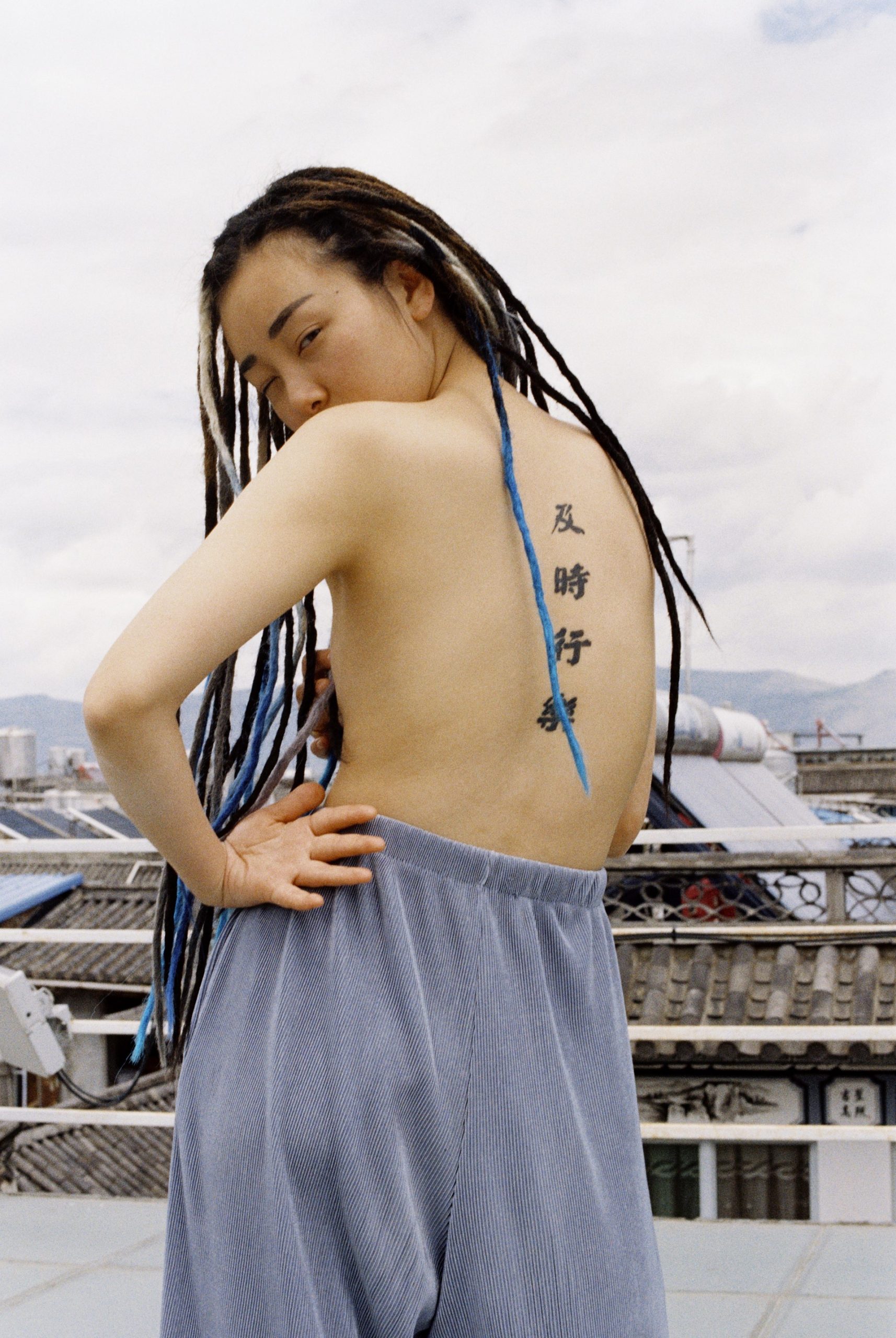
At the 2024 edition of Art Rotterdam, Migrant Bird Space, an art foundation and gallery based in Berlin and Beijing, is presenting the work of Luo Yang. She was born in the 1980s in the Liaoning Province in China and her work is a unique combination of carefully staged portraits with a raw, blurry, snapshot-like aesthetic. These photos reveal the strength, vulnerability, and inner life of her subjects, mostly young people growing up in a rapidly changing China. She portrays these young individuals in such a way that highlights that what makes them unique — their style, appearance, tattoos, quirky gaze, or personality. For the artist, this deep dive into the lives of others is also a way to better understand her own life. For that reason, her work has both an autobiographical and a societal aspect, reflecting a kind of local universality within the context of China. Some people, including her friends, she has followed for a long time, showing a certain evolution or growth — a growth that mirrors her own. Additionally, she immortalises friends of friends, strangers she encounters on the street, or people she meets on the internet.
In her ongoing central series “GIRLS” (2017-), Yang captures the nuances and complexity of being a woman in contemporary China, exploring themes such as youth, the naked body, and femininity. She photographs women from different generations and backgrounds. These women are vulnerable yet self-aware and innately cool. Together, they embody a culture that deviates from dominant conservative expectations and stereotypes. It’s important to note that her intention is not to incorporate Western expectations. In the West, for instance, Chinese art is often viewed through a Western gaze, based on certain ideas about what China and its people look like. In a 2018 interview with METAL Magazine, the artist noted that “people in China see my photos as an honest record of girls’ lives, simple as they are. Whereas in the West, my works are inevitably interpreted from a political or feminist perspective, neither of which is my intention.” At the same time, her photos also show a rawer and less polished image than, for example, the K-pop stars who are popular worldwide, including in China. In 2017, ten years after starting the series, Yang published the monograph GIRLS.
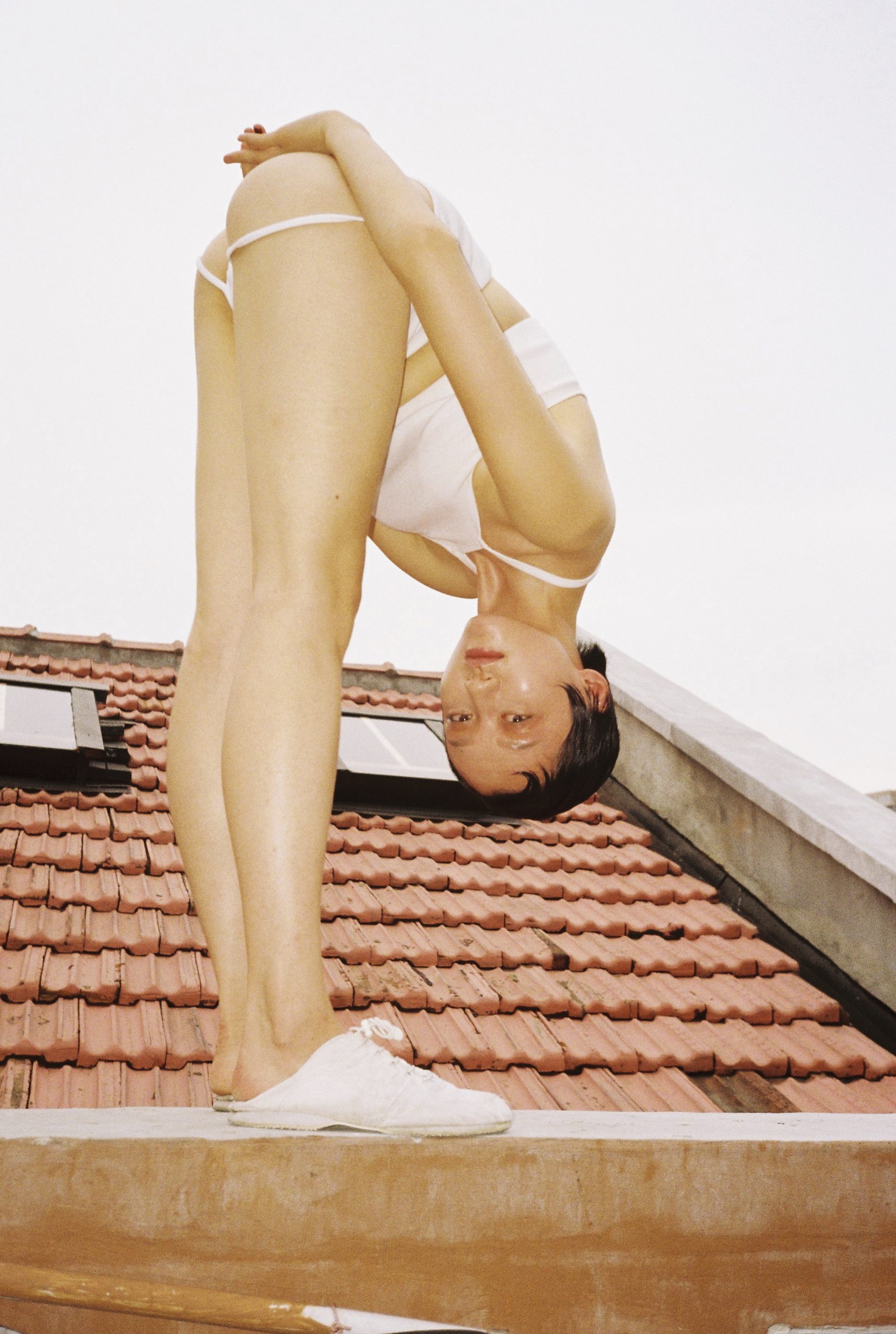
Characteristic of Yang’s work is her ability to build an intimate bond with her subjects. This connection and empathy are clearly visible in her sensitive photos, where models often look directly into the camera: a direct, candid, and almost reciprocal exchange between subject and photographer. Her characters are often nude, but this is not something the photographer asks or requires of her subjects. Rather, it’s the natural result of the trust that develops between the photographer and the person she captures. This is further reinforced by the fact that these people are often photographed at home or in another familiar place.
Yang uses photography as a means to capture shared emotions, worries and life experiences, imbuing her images with an ambiguous depth that is not immediately discernible. In a 2016 interview with IGNANT, Yang stated that “by shooting them, I understood their life better and it made my own world bigger and wider. We might have different values and world views, but what we have in common are a fragility and braveness inside of us. We face the world with our sincerity.”
In her more recent series “Youth” (2019-), Yang focuses on younger generations growing up in a globalizing (and even faster-changing) China. In this series, she explores gender, identity, and the personal growth of people born in the 1990s and early 2000s. Yang’s portraits offer a rare glimpse into the inner lives of these young people: not just young women, but also young men, and young gender-fluid and transgender people. In doing so, she questions prevailing gender norms and highlights a certain diversity among young Chinese people.
Yang studied graphic design at the Lu Xun Academy of Fine Arts in Shenyang. In 2022, she started the Cité internationale des Arts residency program in Paris. Yang divides her time between China and Europe and has exhibited her work all over the world. In 2012 she was praised by none other than Ai Weiwei as one of the “rising stars of Chinese photography” (in an interview with Statesmen). Shortly thereafter, Yang displayed her work in his group exhibition ‘FUCK OFF 2’ (2013) at the Groninger Museum in the Netherlands. In 2018, she was included in the BBC’s ‘100 WOMEN’ list, and a year later she was nominated for a C/O Berlin Talent Award and won a Jimei x Arles Women Photographer’s Award. Currently, her work is on display in the ‘NUDE’ exhibition at Fotografiska in Berlin.
During Art Rotterdam, Luo Yang’s work is presented by Migrant Bird Space in the Solo/Duo section.
Written by Flor Linckens
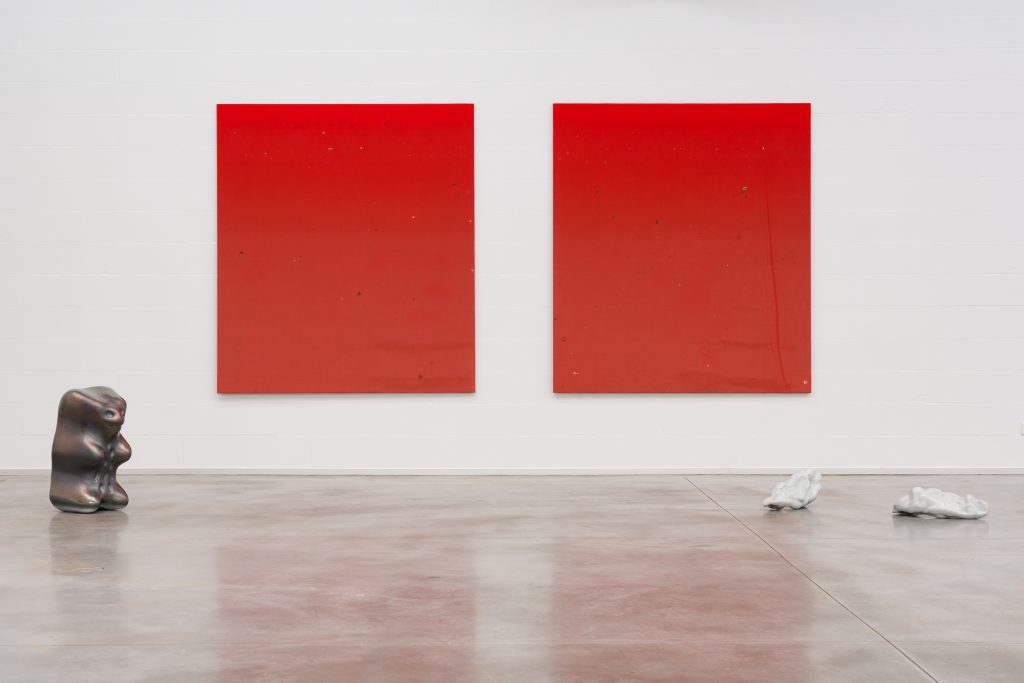
From figurative to abstract and back again: it’s not a journey that many artists take. Dutch artist Mirthe Klück doesn’t see a significant distinction between the two and creates both abstract paintings and sculptures. “In the end, you’re looking at glued-together bits that evoke a feeling or thought, whether cast in a recognisable figure or not.” This has resulted in a versatile body of work based on Klück’s idiosyncratic observations of everyday things. From a gummy bear and spit-out piece of chewing gum to the wrapper of a chocolate Easter bunny, she explores how layers of matter interact to create a surface that feels both familiar and strange. At Art Rotterdam, FRED&FERRY Gallery is presenting an overview of Mirthe Klück’s work.
Congratulations on your presentation at Art Rotterdam. What can we expect?
Thank you! I’m excited to showcase a comprehensive overview of my work at an exhibition with FRED&FERRY Gallery. I’ll be presenting a combination of more abstract paintings and figurative ceramic sculptures. They all incorporate recognisable motifs and materials from my daily life, transformed into something wondrous and alien based on my own interpretation. I’m guided by painting techniques and ceramic glazes that I find interesting for formal reasons, making the creation journey of the image of intrinsic importance.
What kinds of recognisable motifs and materials are you referring to?
The ceramic sculptures, for instance, are enlargements of a gummy bear and chewed pieces of gum. When I saw a pink spit-out piece of gum on a rosy marble sculpture in Italy last year, I suddenly saw the sculptural qualities of such a form. Chewing gum essentially creates a mould of your teeth. In my paintings, I choose textile materials like curtains, carpet backing and sunscreens as supports. I sometimes add almost nothing to a fabric, but incorporate it by tearing it and creating a composition or simply by stretching it. This may sound inconsistent, but in all these works, I explore how layers of matter interact to create a surface that feels both familiar and strange.
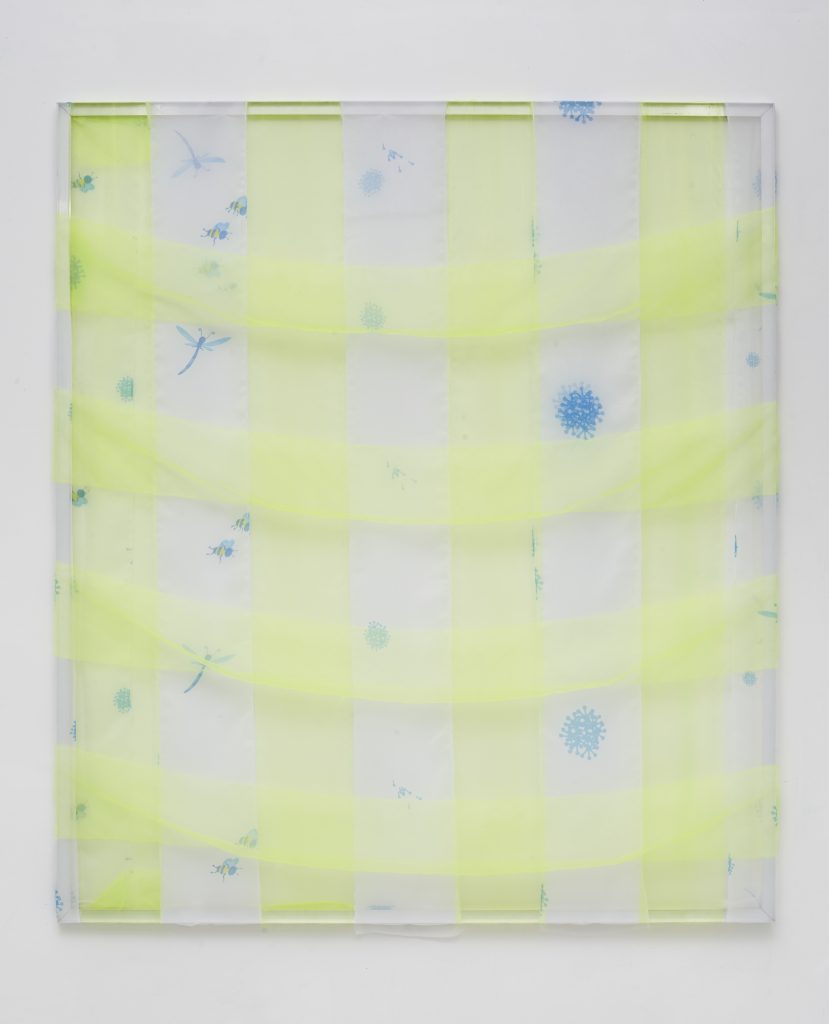
Do you consider this presentation a logical continuation of your previous work or have you embarked on a new path?
This presentation is in fact a continuation of my solo exhibition Moon White Rabbit, which I presented at FRED&FERRY at the end of 2021, which was the first time I showcased both paintings and ceramics. For years, I’ve been creating two-dimensional work that responds to the medium of painting. My first ceramic sculpture, Blue Moon (2021), originates from such a conceptual work, specifically the silkscreen on aluminium foil I’ll be Your Mirror (2018), for which I enlarged a package featuring a Easter bunny that is painting.
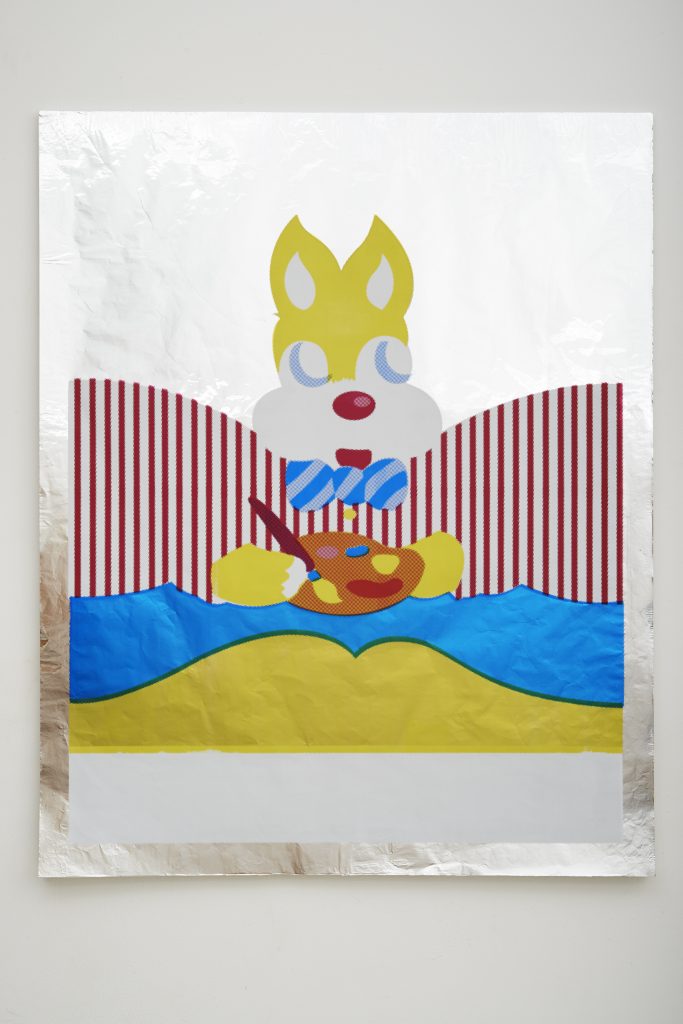
The sculpture is an enlargement of the chocolate itself. I found ceramics appropriate due to the similar properties of chocolate and casting clay, such as their creaminess and how easily they transition between liquid and solid phases. The title refers to the glaze: the blueish green Jun glaze is a type of celadon that in China referred to jade stone and The Jade Hare is folklore based on moon markings resembling a rabbit.
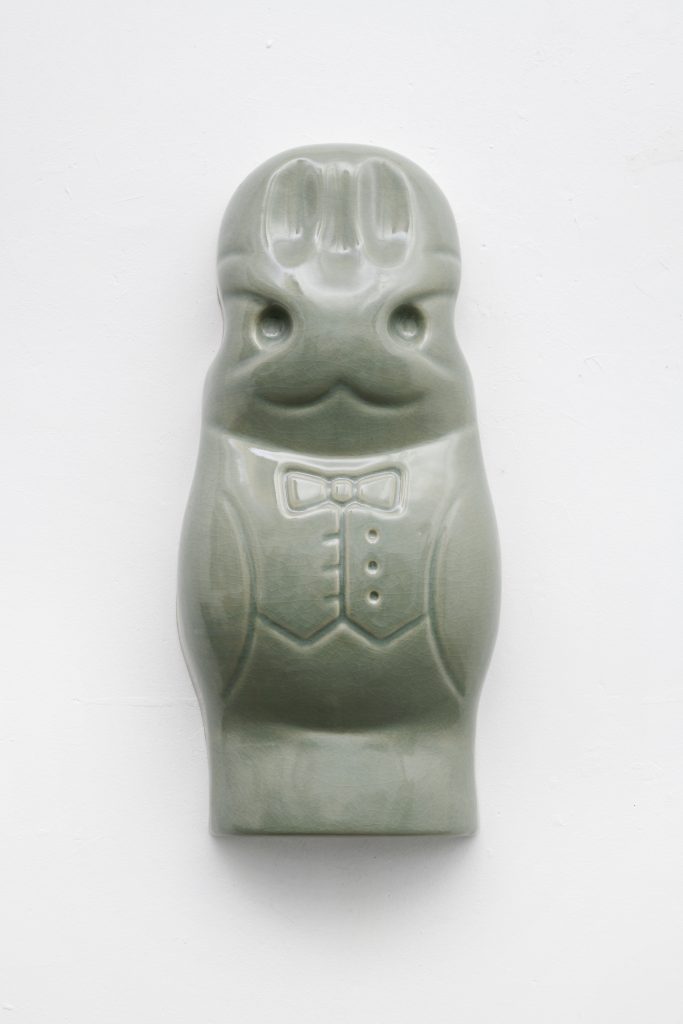
The Jun glaze is said to have molecules similar to those causing the Rayleigh scattering in the air, making our sky appear infinitely blue. This brings the glaze closer to the natural phenomenon than paint alone can mimic. Last winter, during a residency at the EKWC, I began focusing more on ceramics. This process resulted in several sculptures that I will be presenting at Art Rotterdam, along with paintings influenced by this process.
Out of curiosity: you initially worked abstractly and later also figuratively. Normally, this is a significant shift in someone’s work, but I imagine that for you, the difference between abstract and figurative isn’t that considerable. Is that correct?
Yes, that’s correct. I don’t see a fundamental difference. In the end, you’re looking at glued-together bits that evoke a feeling or thought, whether cast in a recognisable figure or not. I use figuration more to introduce certain shapes, colours and associations. All the same, I am selective about which figures I use because it should provide just enough without becoming narrative or expressive.
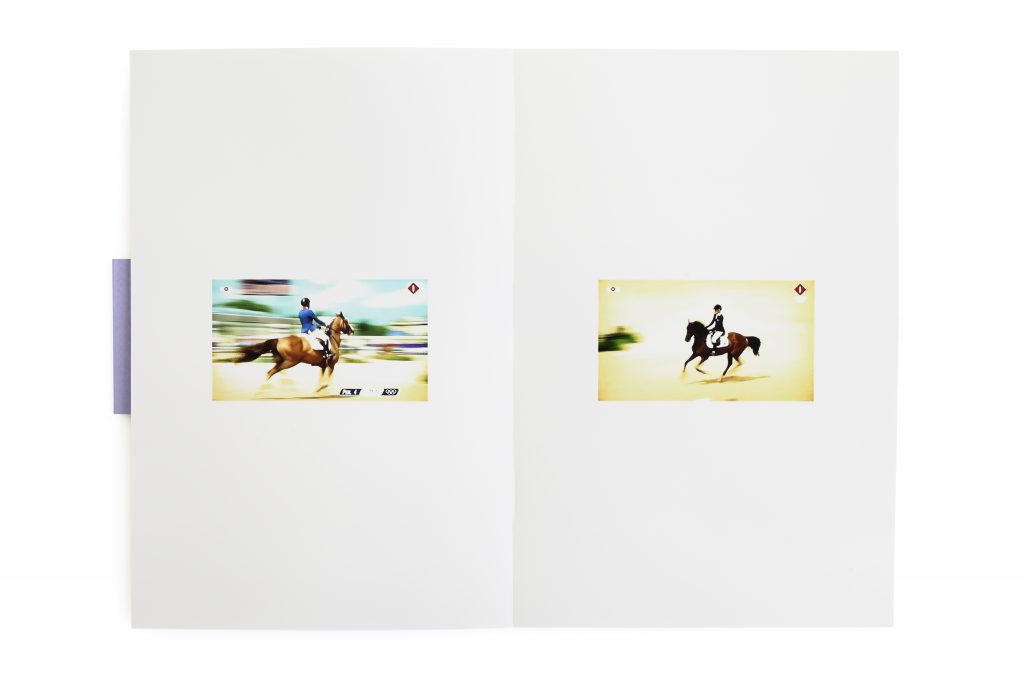
Most people may know your work from Horses in 2021, featuring photos of the equestrian jumping event at the 2012 Olympics. You didn’t take the pictures in the stadium, but in front of the TV with your phone. How did this idea come about? Why did you decide to approach it this way rather than choosing stills from a recording?
The idea came about very intuitively. I simply grabbed my phone while watching the Olympic Games on a lazy summer day, curious to see if I could capture one of those floating horses over those artistic obstacles with all those graphic logos in the corners of the screen. Then I saw that my phone rendered it beautifully. The saturation of colours and selective focus made them resemble contemporary impressionistic miniature paintings, reminding me of Muybridge, Degas, cowboy comics and games like Zoo Tycoon. They also emphasise the absurdity of such an event. Somewhere in the world, horses have to jump over artificial obstacles in a very staged environment. This is captured by various equipment, transmitted via satellites to our TV screens in a live broadcast to give us a feeling of being there.
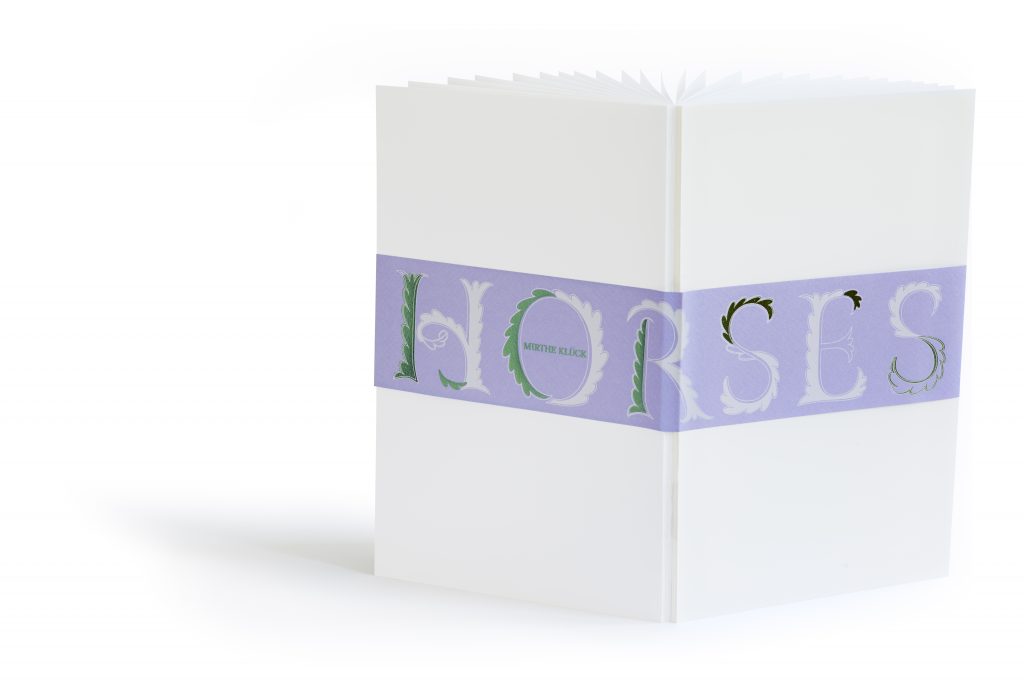
Since 2012, this trend of experiencing things through screens has only intensified. By taking the photos and printing them in a book, I add more layers to my subjective experience. It was actually quite challenging to reproduce the aesthetic quality of my glowing phone screen on paper. So, the pages of the book consist of digitally developed photos because c-prints also use the RGB colour scheme and layers of chemicals create the colour. Quite similar to a painting or ceramic glaze.
You have a keen eye for seemingly insignificant details and your work has a certain lightness/humour to it, which is why it is sometimes compared to that of Daan van Golden. Is he one of your influences? Who are others?
Yes, Daan van Golden has been my greatest influence after leaving his exhibition at GEM in 2014 feeling very happy. I thought, if art can evoke this feeling, I hope my work can do the same for someone else someday. There are various artistic practices and works that I appreciate, such as those of Lily van der Stokker and Klaas Kloosterboer, but I haven’t come across an artist to whom I feel as connected as to Daan van Golden. It’s mainly because of the feeling I get from his work, although I can’t explain it in simple terms. It’s a basic sense of understanding. I must admit I’ve somewhat let go of this fascination, or perhaps obsession, in the past few years because I need to move forward with my own life. But I think we have a similar way of perceiving things.
Others must notice the playfulness in your work. What is the best compliment you’ve ever received about your work?
Well, it’s hard to choose the best one. Personally, I really appreciate receiving compliments from other artists or when people develop a kind of personal connection with my work. They don’t necessarily have to have it hanging on their wall at home. For instance, someone I didn’t know at the time showed me that he had a painting of mine as a screensaver on his phone. But it’s always interesting and funny to see how people react to my work. I often hear that people want to touch it, even though that is not my intention.
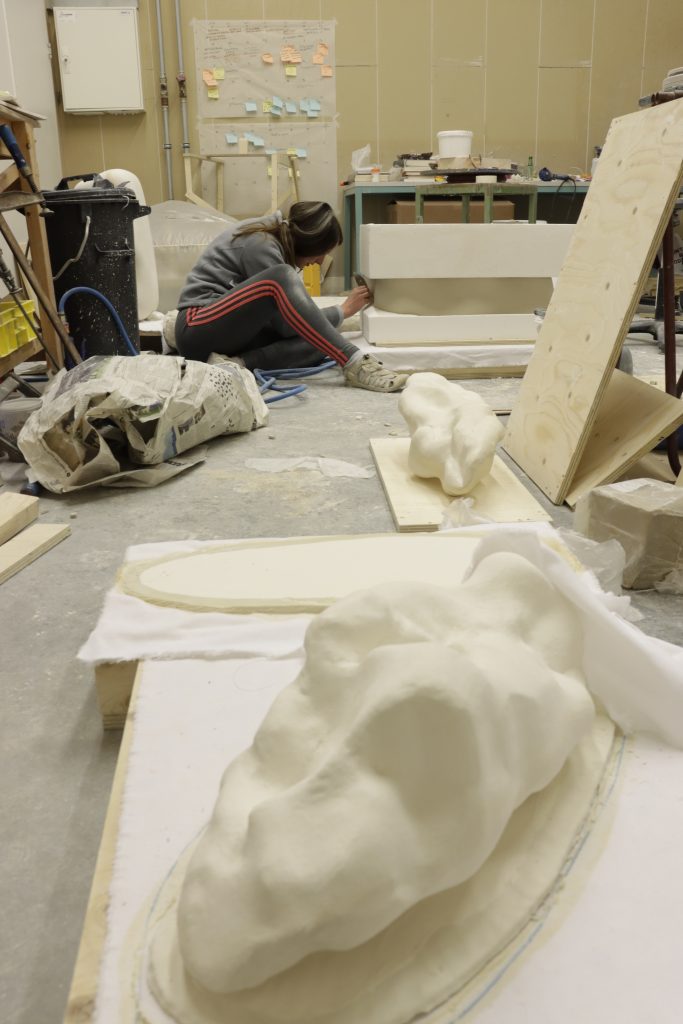
What are you currently working on?
In January, I’m be curating a group exhibition at FRED&FERRY in Antwerp called Mountain Friends. For this exhibition, I’m selecting specific works by Daniele Formica, Kaï-Chun Chang, Maja Klaassens and Nishiko, which resonate with my work. All these works are poetic translations of everyday objects and elements. Broadly speaking, this exhibition is about the illusory difference between what is natural and artificial. I’m also preparing for a residency I’ll be doing in the summer – the Creative Residency Arita in Japan – thanks to the support of the Mondriaan Fonds. The village of Arita is internationally known for its expertise in porcelain, a material that is very challenging to work with. I’m really looking forward to this. Right now, I’m trying to learn some Japanese and am busy implementing the ceramic techniques I learned at the EKWC into my studio. After January, I’ll delve into more theoretical research on Japanese culture and ceramics.
Written by Wouter van den Eijkel
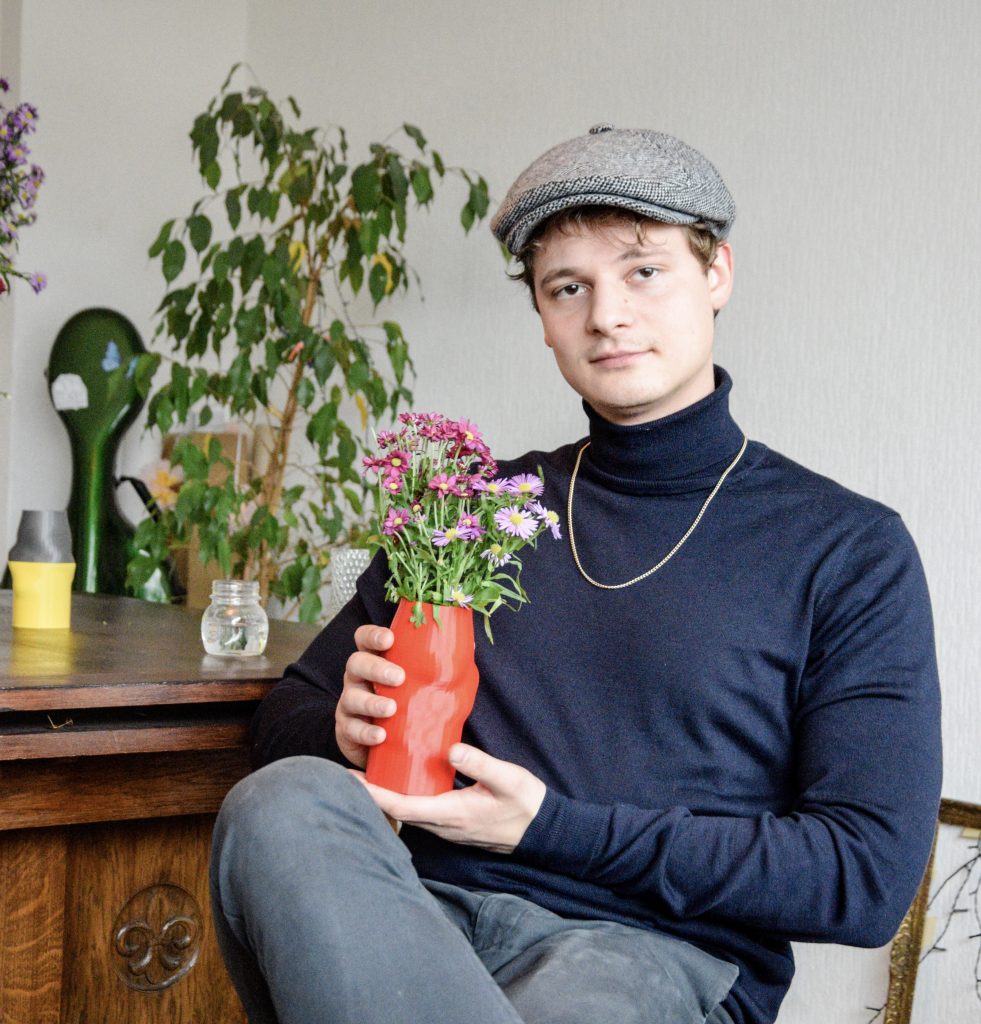
Interview with Filipp Groubnov
Eight years ago, Filipp Groubnov moved from Belarus to the Netherlands. At the Royal Academy in The Hague he discovered that he could express many of his interests in installations. He prefers to be in the border area of various artistic and scientific disciplines. “There I find space for my own story and the opportunity to discuss all kinds of questions that occupy me. There are simply too many things that inspire me to put them in a single system.” This also applies to his visual language, which is a unique mix of figuration and abstraction, although according to Groubnov this is ultimately a matter of scale. His work is shown at Art Rotterdam by Josilda da Conceição.
Let’s start at the beginning. Before studying fine arts, you studied physics. What made you switch?
Even before studying fine arts, I was very interested in art. I have always been involved in some sort of creative activity, from graffiti to drawing and painting. I think the main reason why I didn’t choose to study art initially was because I didn’t know anyone who followed that route and, at the time in Belarus, I didn’t really consider an art career as a possibility. On the other hand, I was interested in science and I imagined studying physics as a kind of creative process, too. But one year into the programme, I realised that it was very formal and uninspiring. At some point, I simply couldn’t do it any longer and that’s when I decided to switch.
You moved from Belarus to the Netherlands in 2015. What kind of work were you making at the time?
When I moved to the Netherlands in 2015, I wasn’t very familiar with contemporary art. In fact, I was barely familiar with contemporary art at all because it isn’t well represented in Belarus. At the time, there was only one gallery that showed contemporary art in Minsk and I also lacked a context to truly understand it. I was mostly influenced by early 20th and 19th century styles like Impressionism and Surrealism, and was mostly focused on painting and drawing.
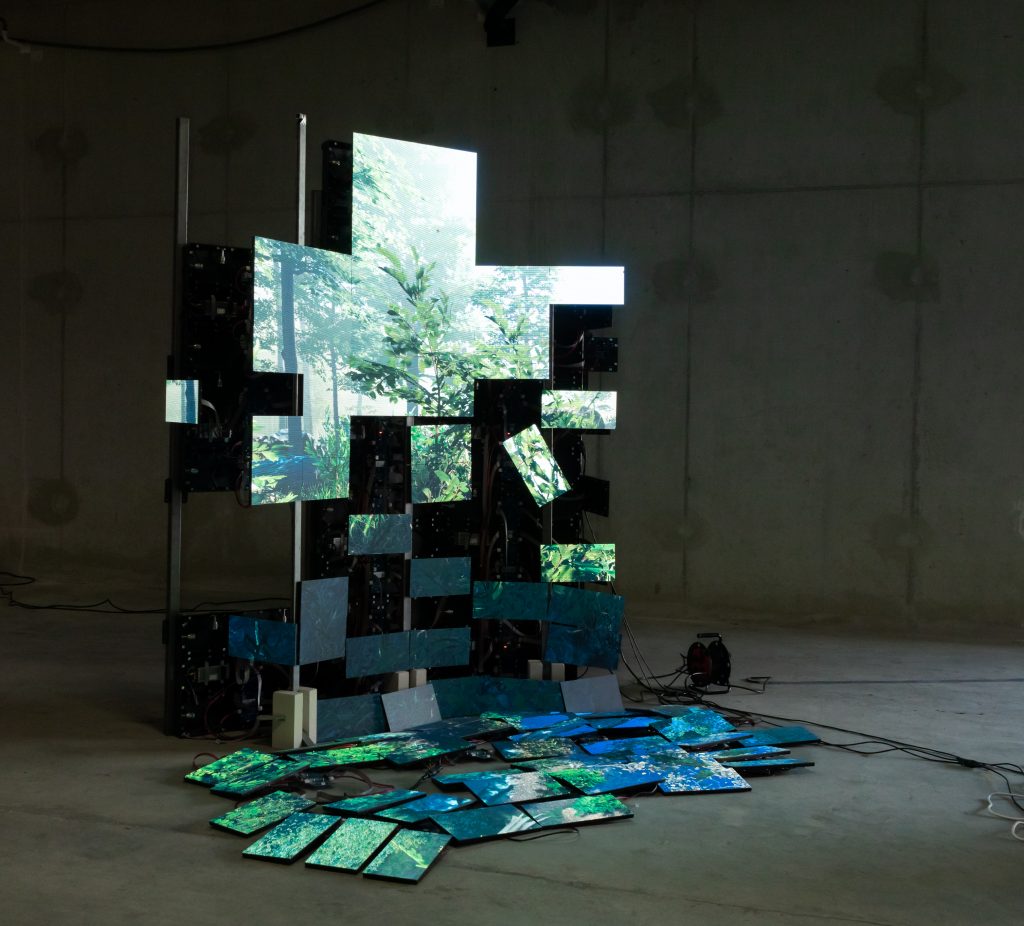
Would you say there’s a different approach to art here than in Belarus? If so, was it hard to get used to?
It was definitely hard to get used to the idea of ‘contemporary art’ and what it entails. I often struggled to understand what the teachers expected from me and was also missing a huge number of cultural references since around the 60s. So, it definitely took some time to catch up, but I feel like it also gave me a unique, almost ‘outsider’ perspective to contemporary art.
Your work isn’t political in nature. Given the mass protests after the 2020 general elections in Belarus and the war in Ukraine, as well as the role of Belarus in this, I can’t help but wonder if it is hard to stay away from politics in your work?
For a long time, I’ve had this idea that I wanted to stay away from ‘politics’ in my work, but this is changing, especially due to the events that you mention. I think that I no longer consider ‘political’ as something separate from other facets of life. It is just part of the condition that shapes many complex relationships between human, matter, mind, etc. In my last work, for example, my personal story and the current situation in Ukraine becomes part of the narrative and an essential element of the project.

I’ve read that you started out by painting on canvass. Today, you primarily make installations. What happened along the way?
That’s right, my more ‘conscious’ artistic journey started with canvas and oils. The switch to sculptural installations happened while studying in the Netherlands. I was enrolled in a course on ‘expanded sculpture’, which inspired me to experiment with installation and different media. You might say it opened my eyes to the fact that sculpture and installation can be so many different things. I then began to be aware of all the possibilities to combine materials, images and sounds. I slowly starting realising that in the field on installations, I can combine all my interests in one. To this day, I am in awe of all the possibilities of installations. I still feel like I have only scraped the surface of this discipline.
What would you say is the main theme of your work?
I think an essential (central?) theme of my work is to reject the idea of a ‘main theme’. My interest is in multiplicity and approaching any subject as a kind of choir of detuned, human and non-human, living and non-living voices. What I choose to talk about changes from one project to the other, but what stays the same is my approach to positioning things like personal emotions and narratives in the same ensemble as, for example, the erosion produced by water passing through the landscape. Right now, I am quite fascinated by the subject of war and violence, but it is really through the relationships and interactions I create between the story and different materials that the subject unfolds in front of me and takes on all the complex facets that bring it to life.

Your installations have a mix of abstract and figurative elements. How did you arrive at this visual language?
This developed very organically. I think because, on one hand, I am interested in rather ‘abstract’ concepts like those found in physics and science and, on the other hand, I am also very interested in personal and concrete experiences. Ultimately, my approach is that there is no absolute distinction between what can be called ‘abstract’ and ‘figurative’. In physics, for example, we can imagine ‘particles’, which are described in classical physics as discrete concrete entities. But, if we consider the very small scale described in quantum physics, these particles are more like a very abstract ‘field’ without any clear boundaries. So, figurative or abstract may merely be a matter of scale.
How do you go about assembling your installations? Do you have a preconceived idea and then find the right attributes or do you work with whatever happens to be around?
Every installation is a combination of the two. I like to juxtapose some very meticulously crafted elements with ready-made and sometimes more ‘random’ objects that I find. For example, in the installation The Garden of Iarthly Delights, I have placed together a sculptural head of Narges Mohammadi with construction material from a shop. While the construction material was something you can easily buy ready-made, the head on the other hand was a result of a long process of 3D-scanning Narges, 3D-printing the model, casting it, etc. I find the combination of deliberate and spontaneous actions very enriching for the work.
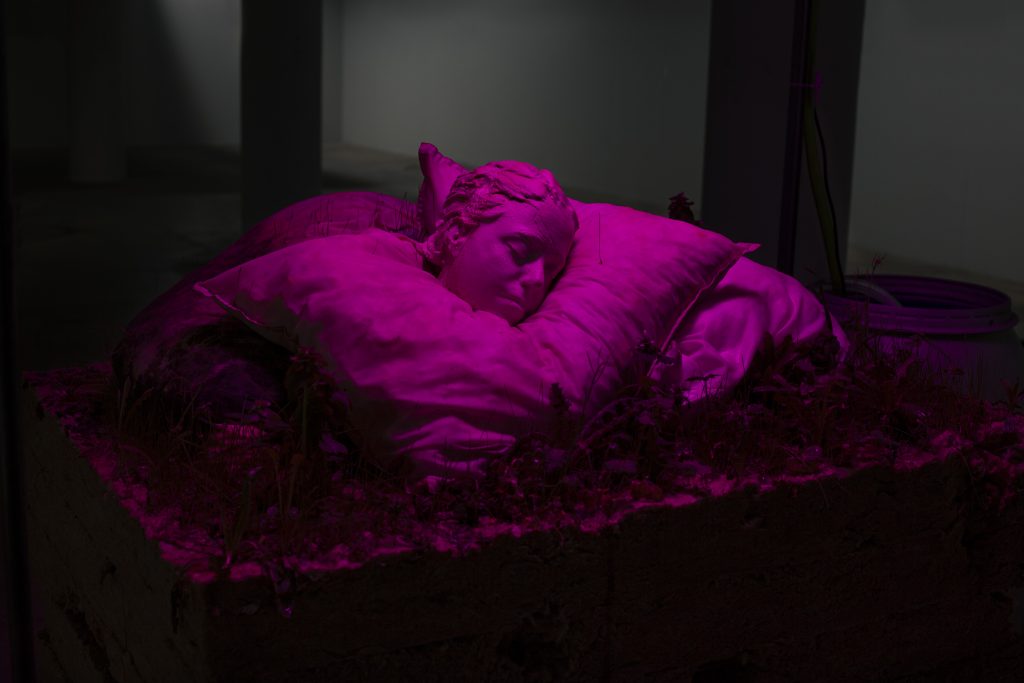
Some of your work has titles that refer to philosophy and biology, such as Natural Philosophy and The Garden of larthly Delights. Are philosophy and biology the main sources of inspiration for you?
In a way, yes, but I think that ‘philosophy’ and ‘biology’ sound so formal. Both of these disciplines are a way of studying phenomena, a systematic approach to research and communication. I am mostly interested in researching areas where these systems start to lose their solid foundation. Within the blurry boundaries of disciplines and systems, I find space for my own story and all kinds of questions that intrigue me. But at the end of the day, there are too many things that inspire me to put them in a single system.
Your installation The Garden of larthly Delights contained living species. I can imagine it can be hard to display in a presentation. So, why do it?
Yes, you are very right. Working with living organism is quite challenging within the context of art exhibitions, which are normally geared towards a different kind of art experience. Most art (or, more specifically, fine art) spaces have a tradition that is based on art objects being static, inanimate ‘beings’. In that context, presenting a living creature requires a completely different set of rules. I find that tension very interesting and it opens up new ways of thinking about art as active participants in the space.
Congratulations on your presentation at Art Rotterdam! What can we expect?
Thank you! Currently, I am working on a project in collaboration with Highlight Delft festival and New Media Center of TU Delft. It revolves around the subject of war and the area of France where the ‘Great War’ left a lasting mark on the landscape. You can expect to see new work with a combination of a digital post-war environment shown on screens and physical sculptural elements. I don’t want to reveal too much because, as a visual artist, I always believe it is better to see for yourself than to hear an explanation. I am also experimenting with glass paintings that might find their way into the final presentation.
Right now, you are at the start of your career. What do you hope to have achieved in the next five years?
There are a lot of things I want to achieve or get involved with. I really hope to participate in residencies that can give me a chance to work with researchers or scientific institutions. I am very interested in interdisciplinary collaboration and, right now, one of my main goals is to establish such partnerships. I would also really like to present my work in more international venues. I have interacted with Dutch audiences for some time now and I am very curious to see how people from other countries and cultural backgrounds interact with my work. I think that would teach me a lot.
Written by Wouter van den Eijkel